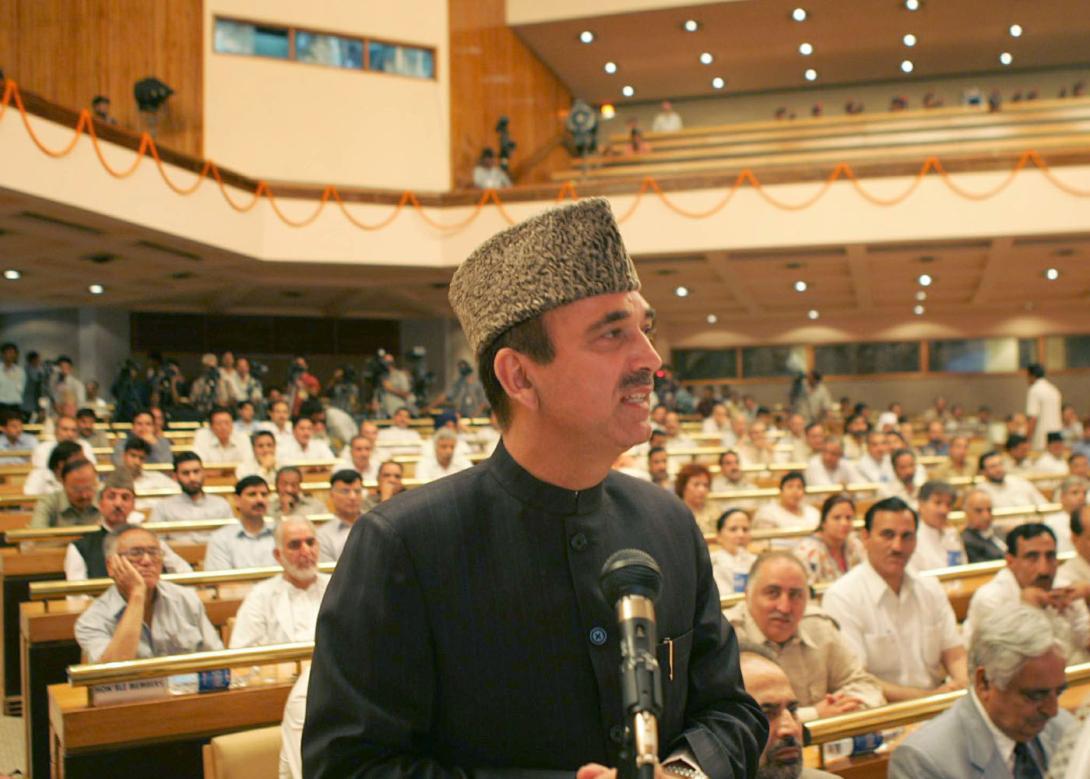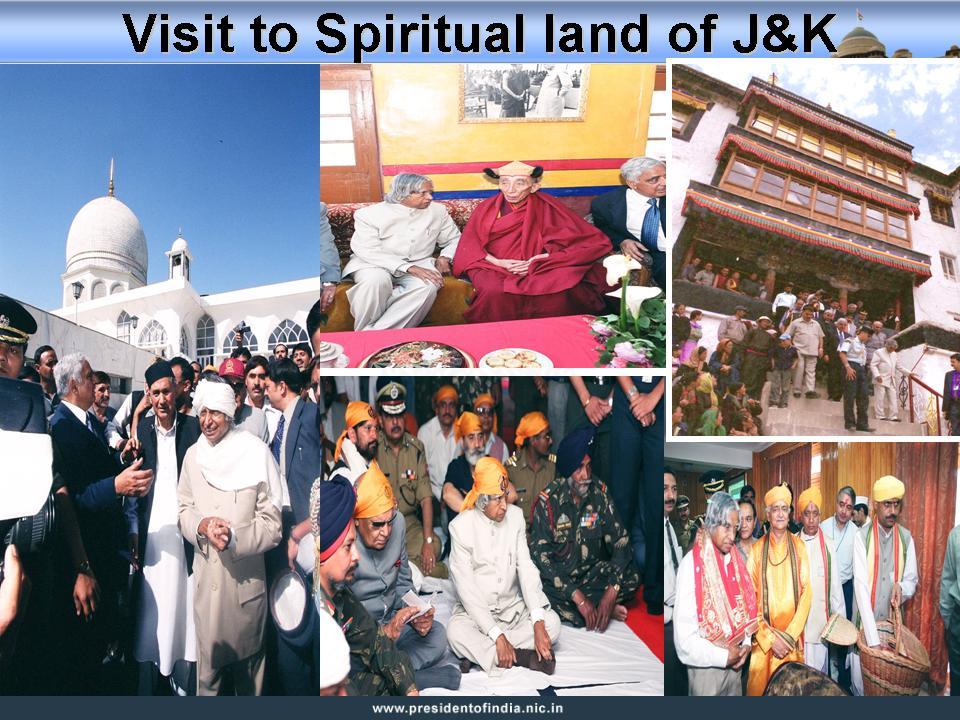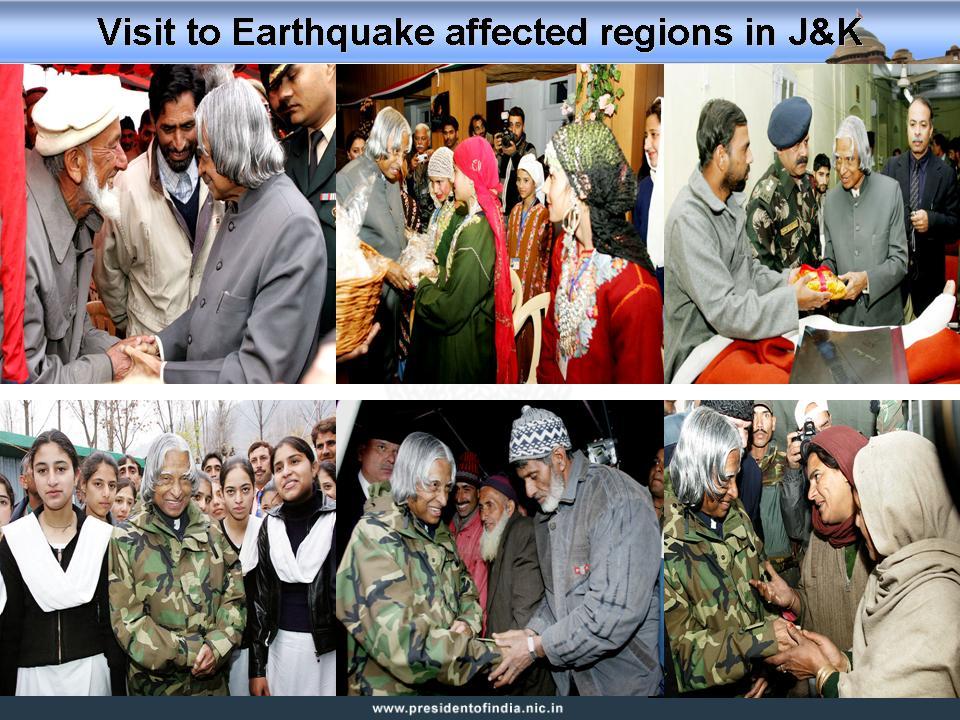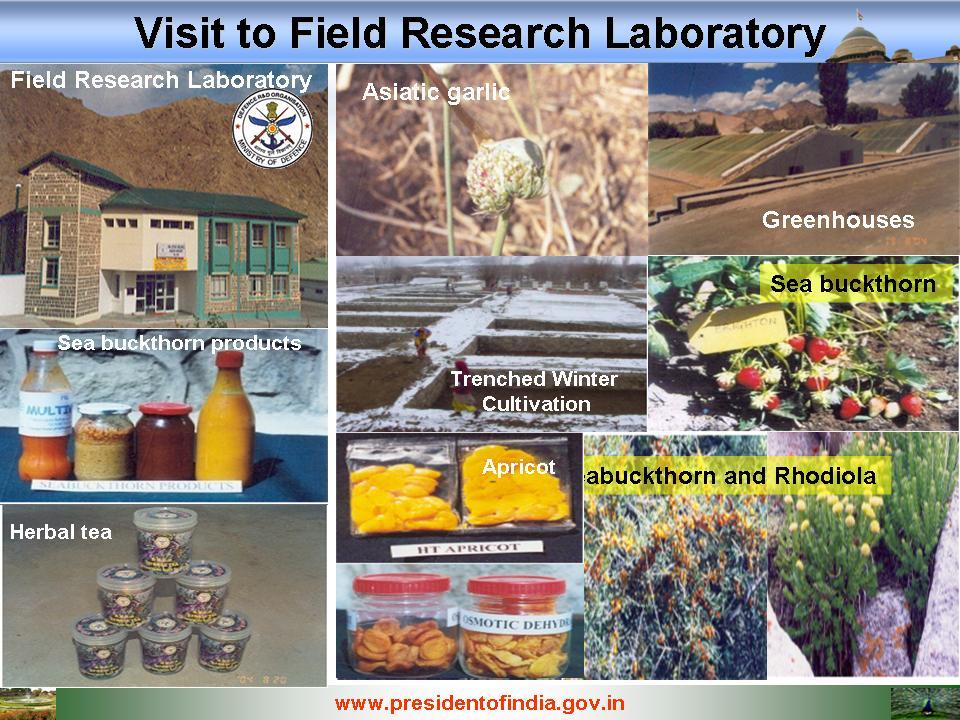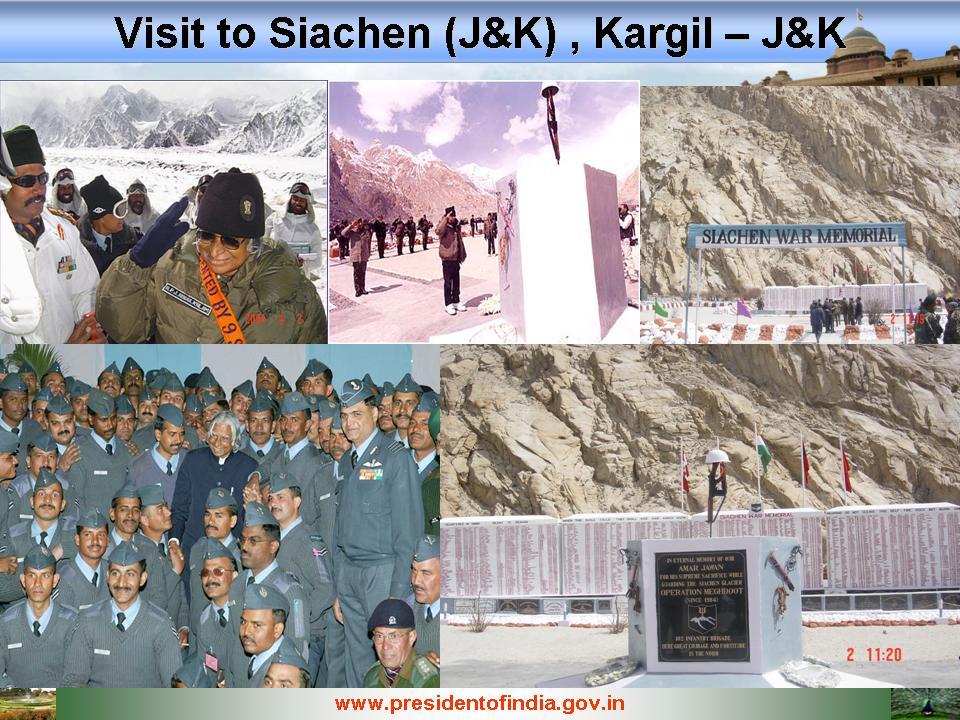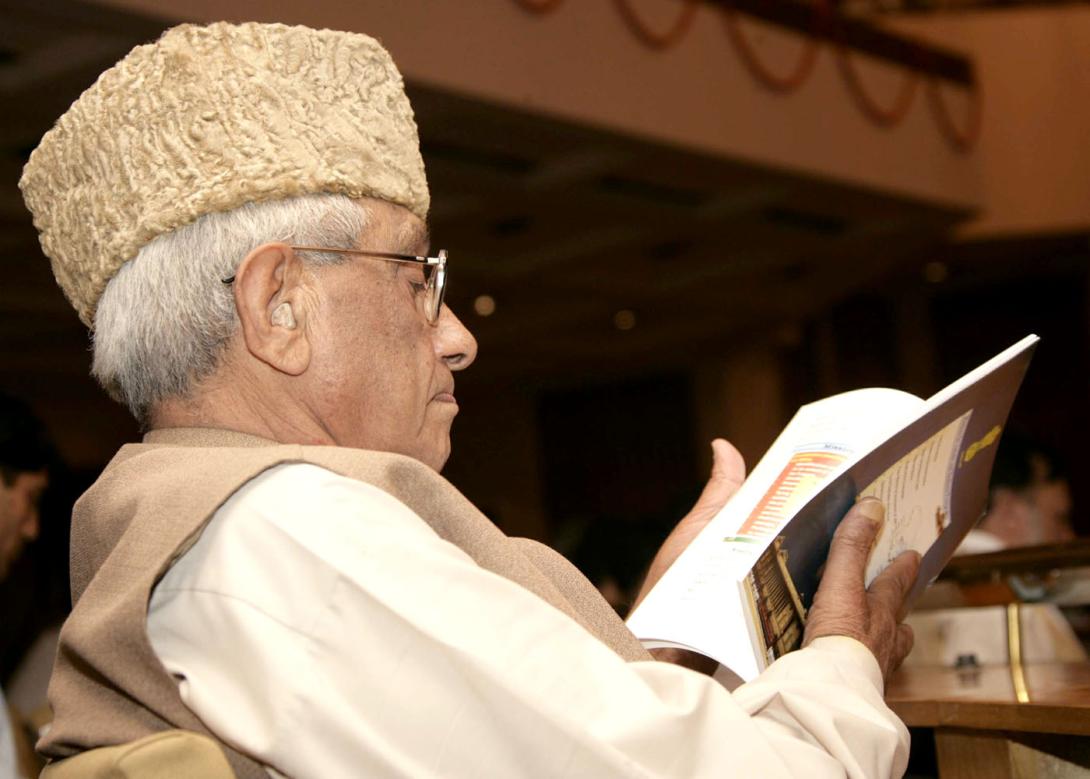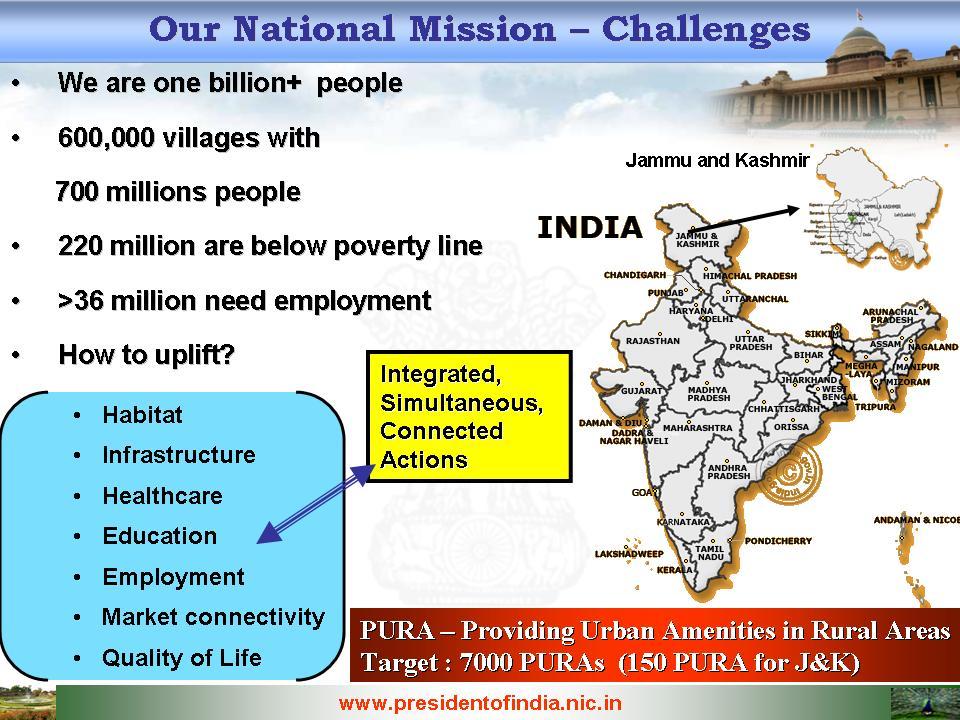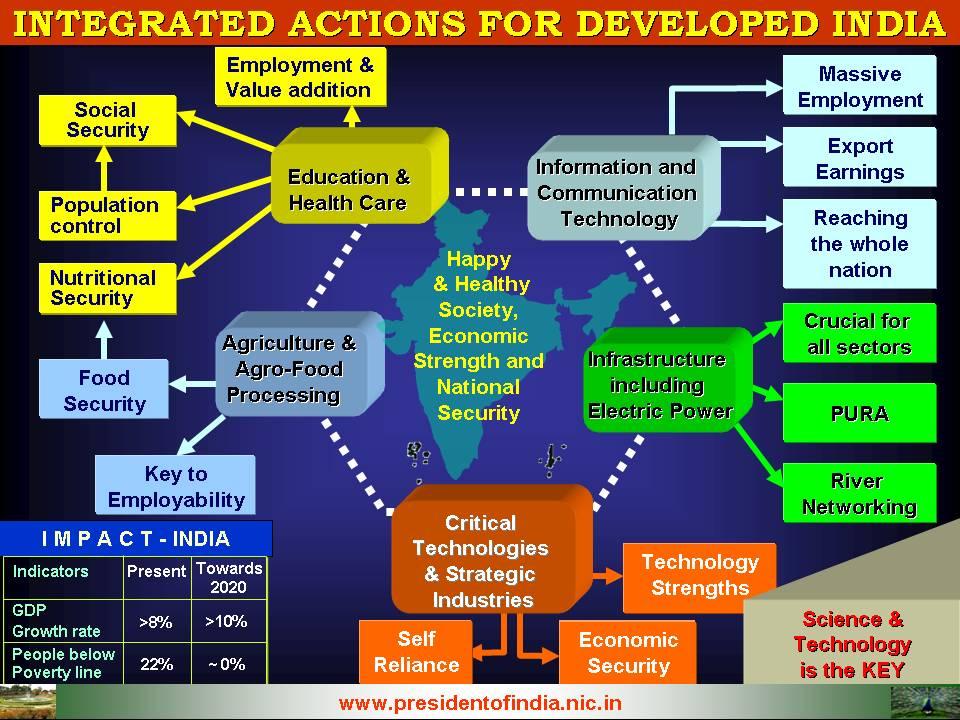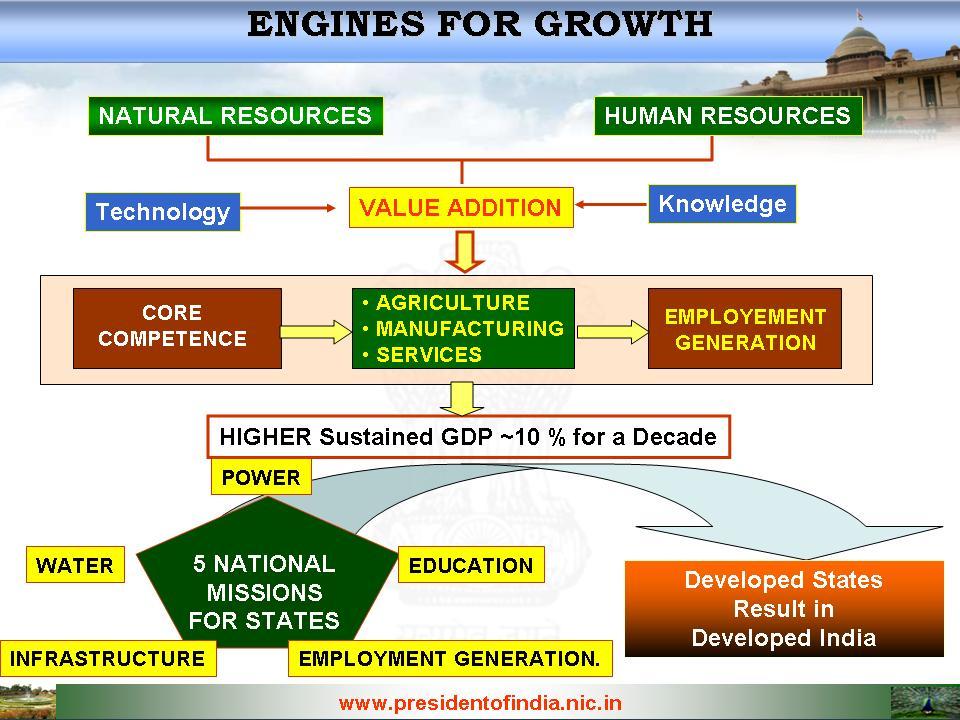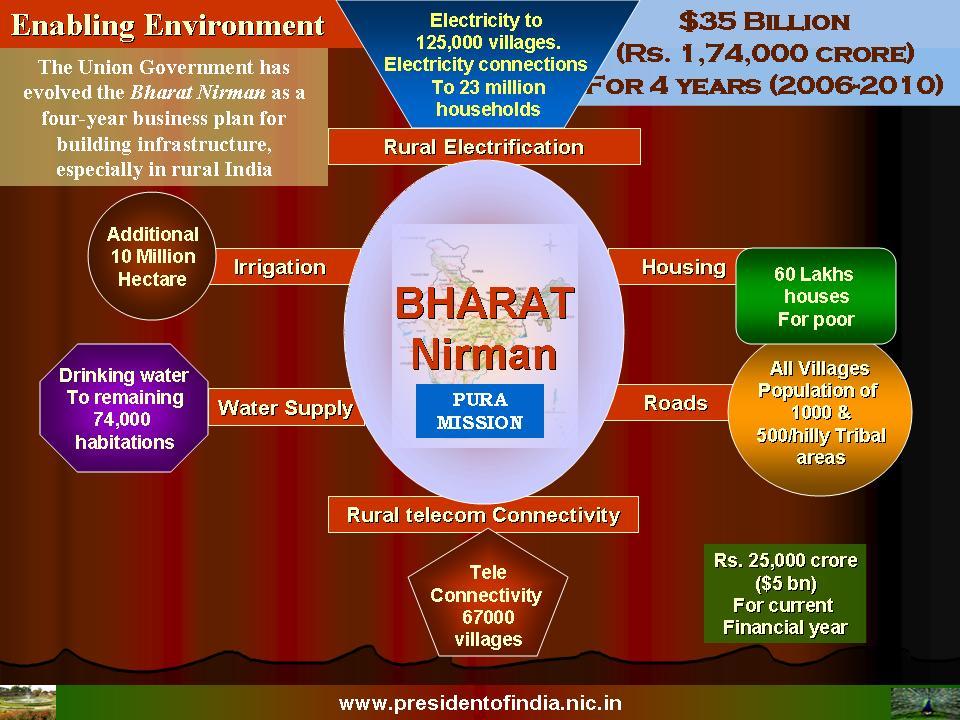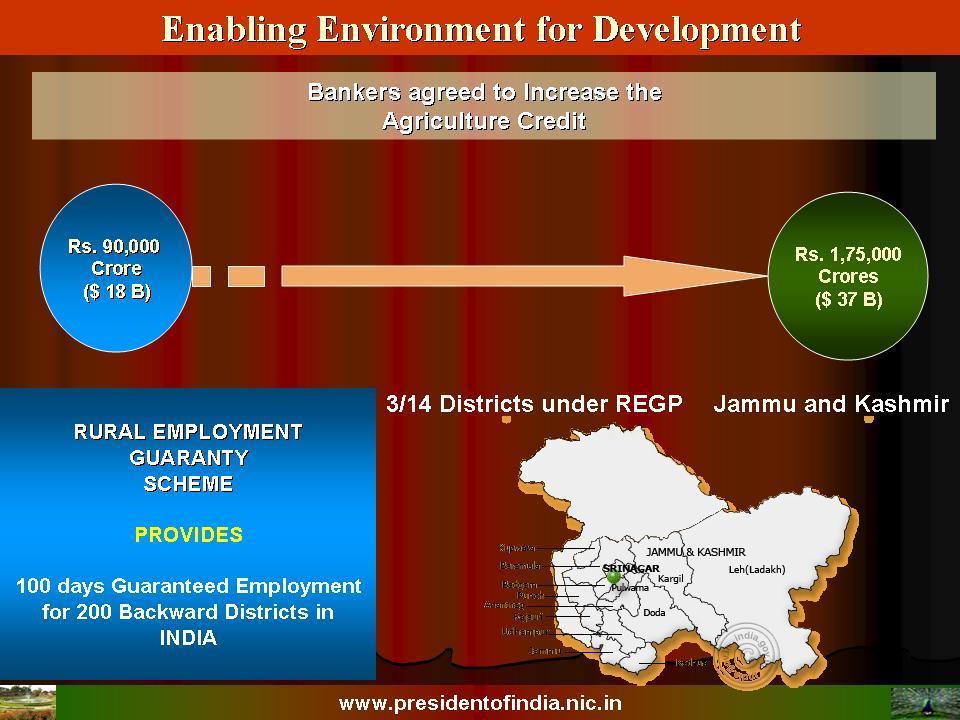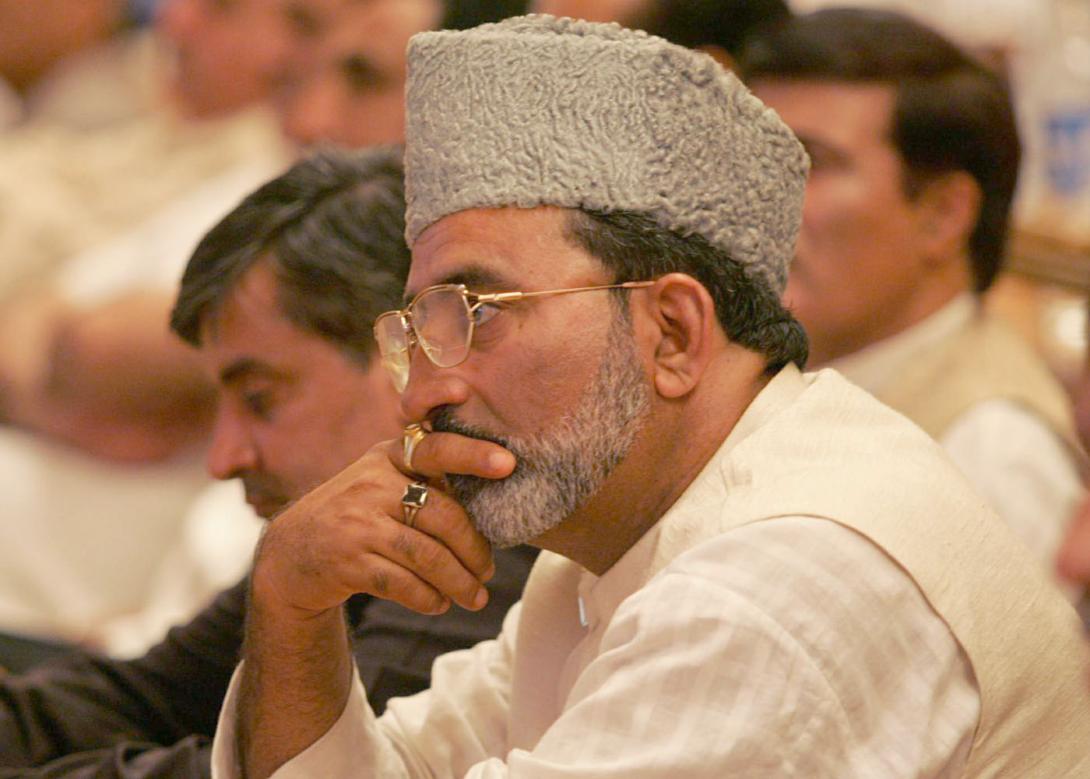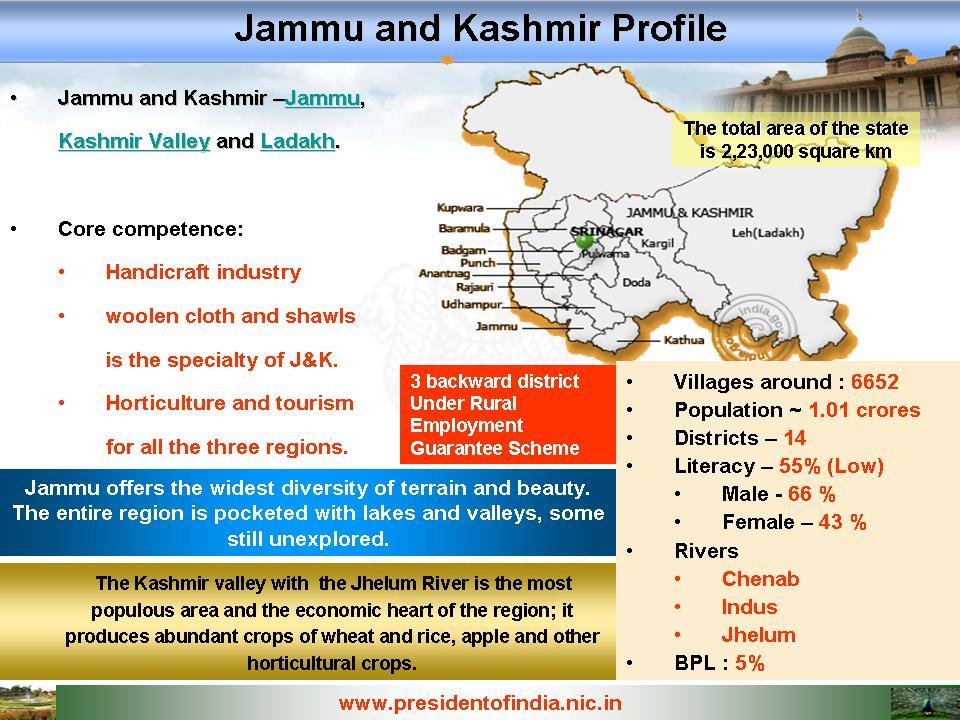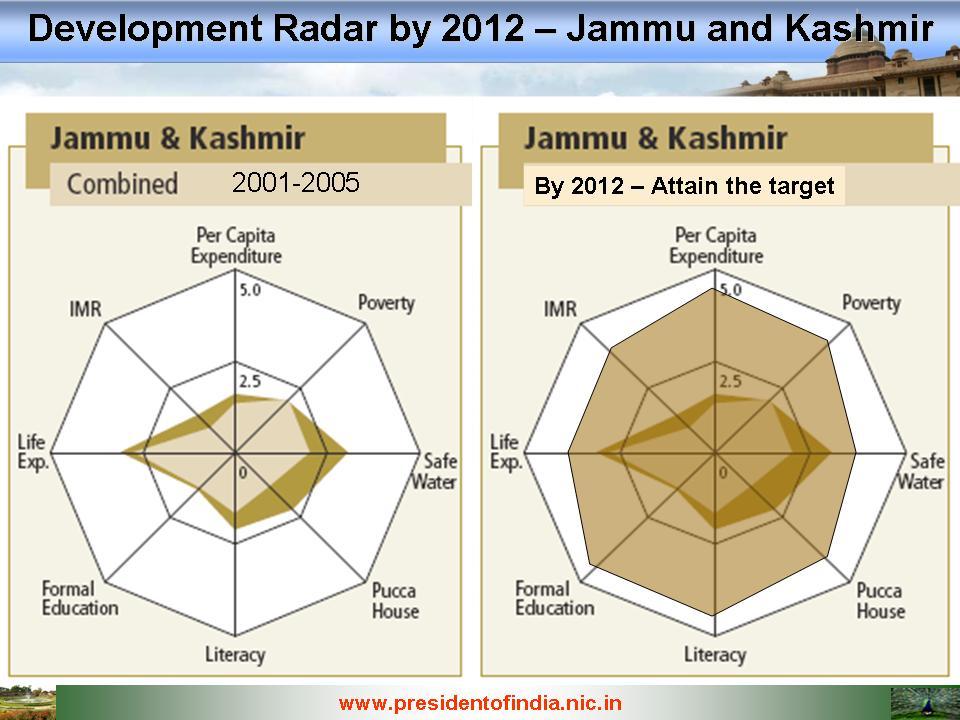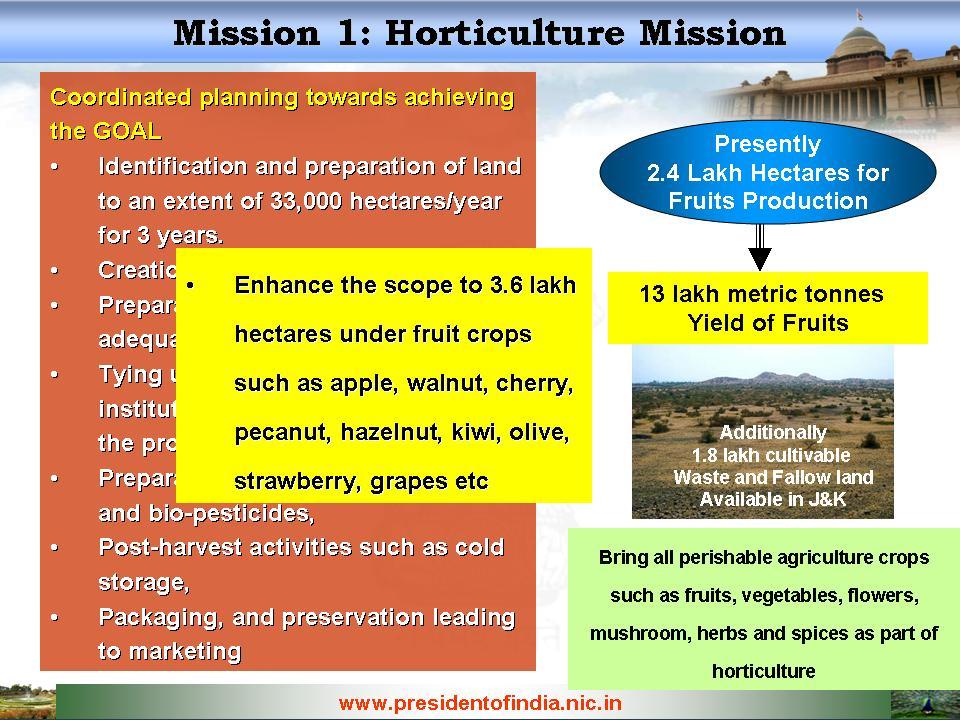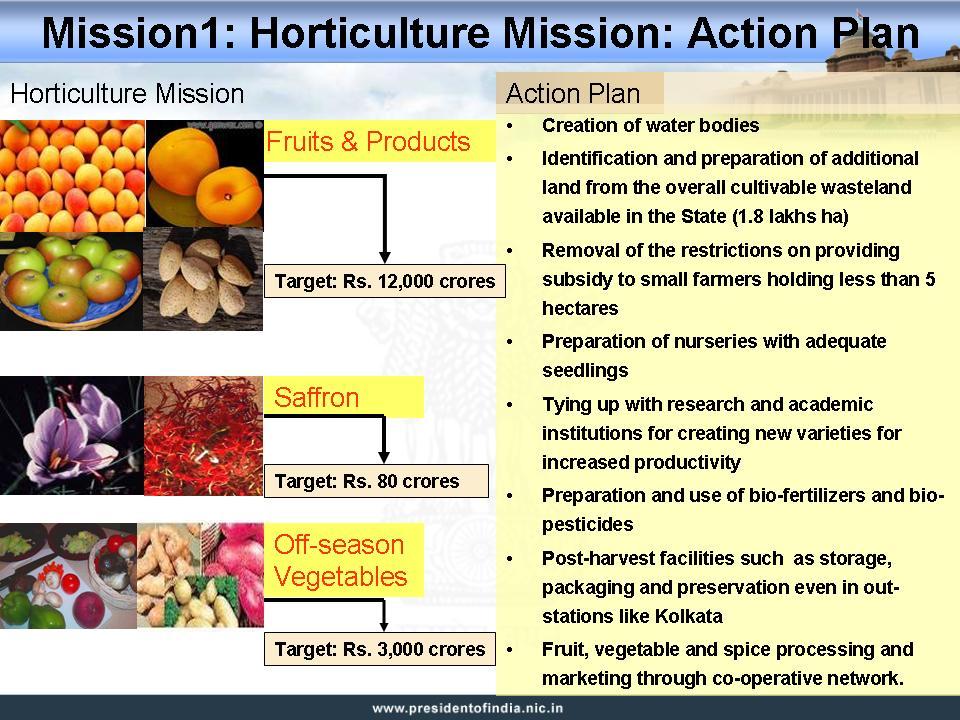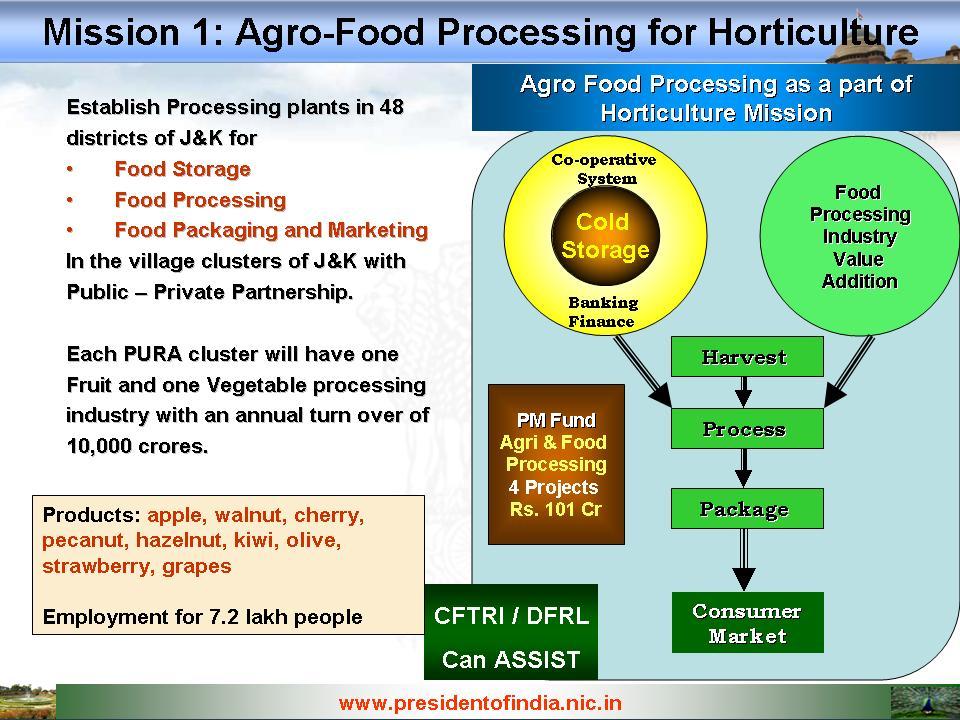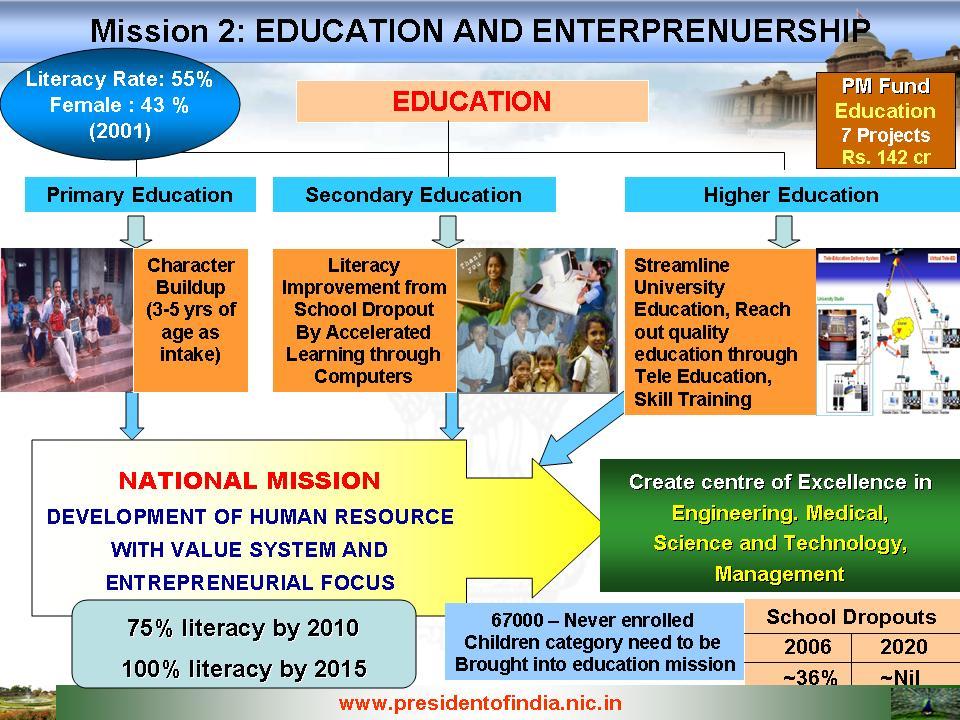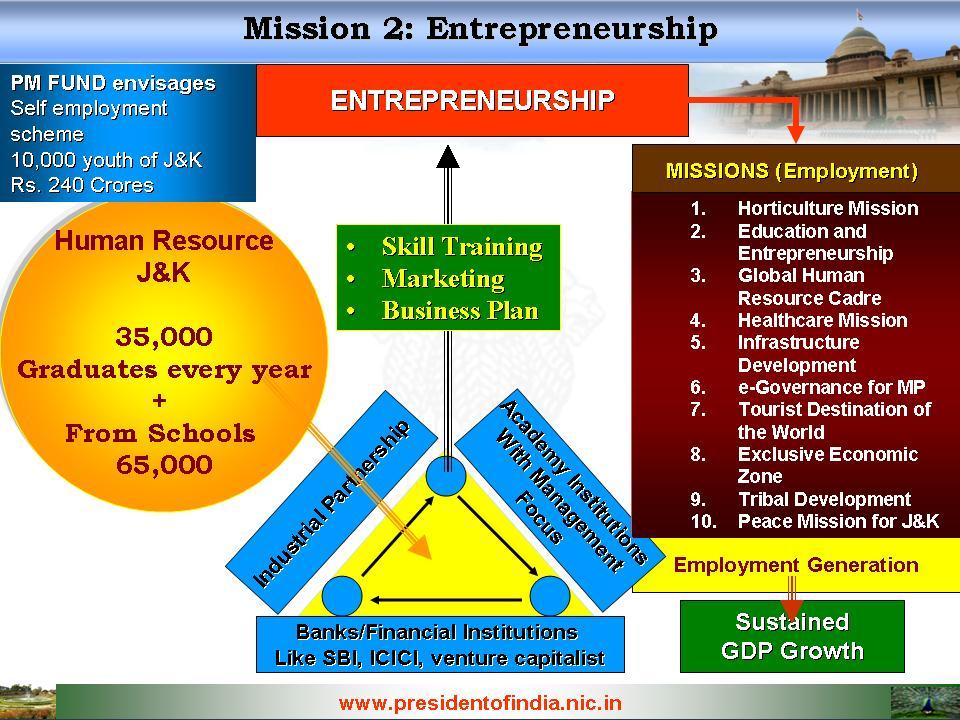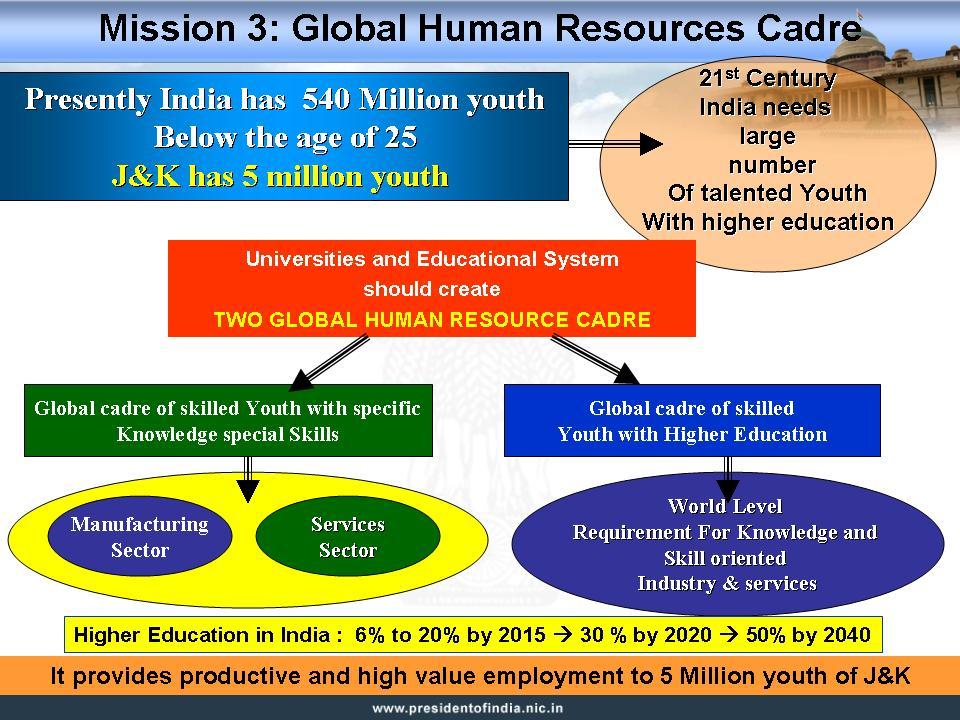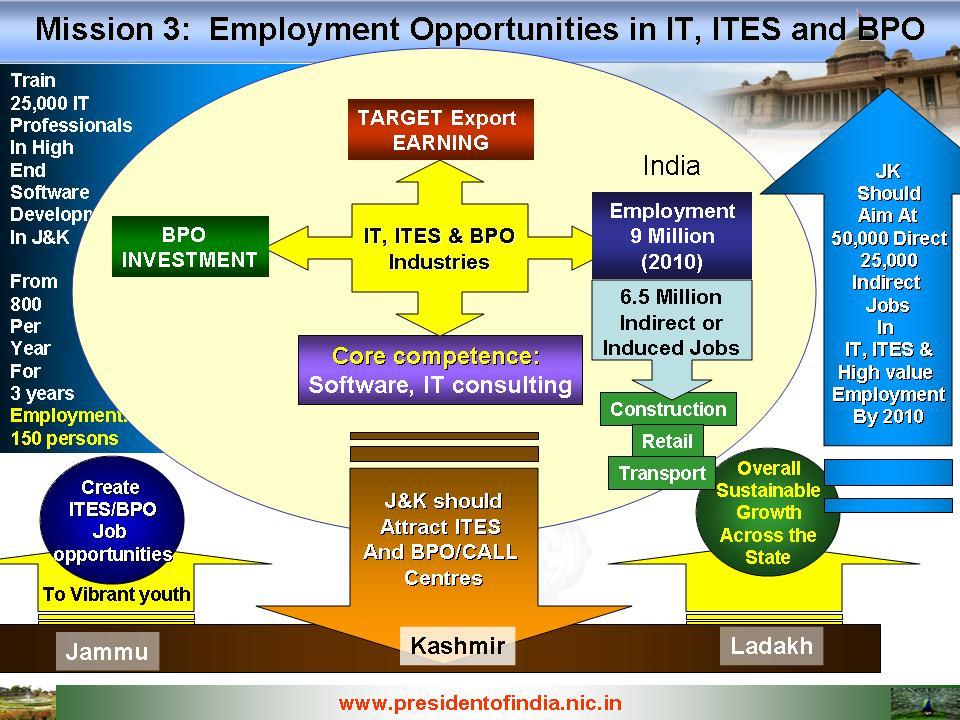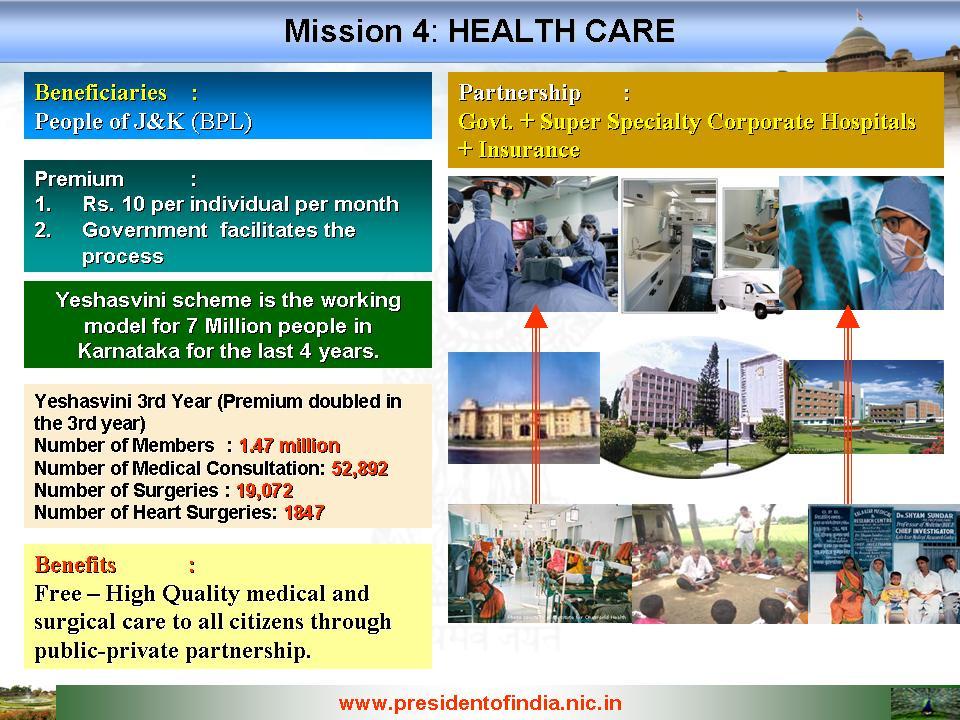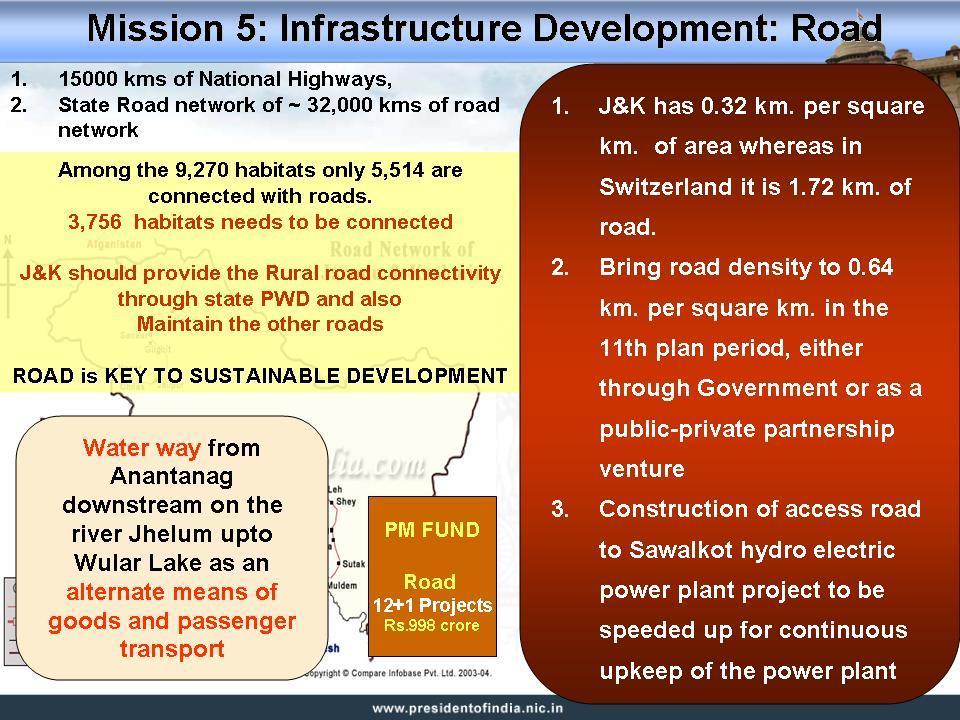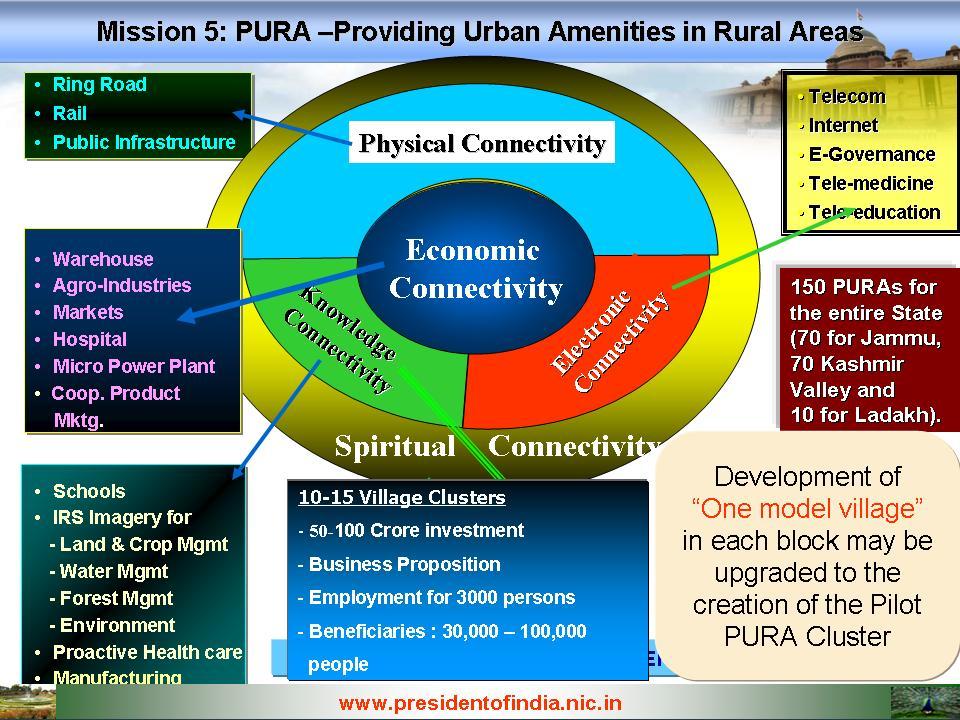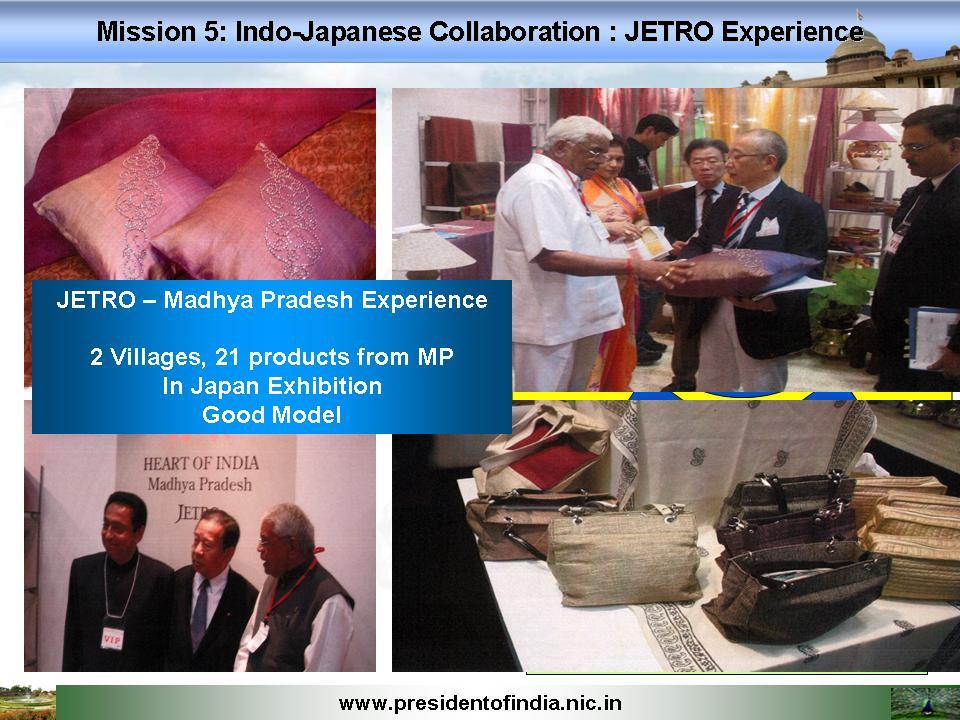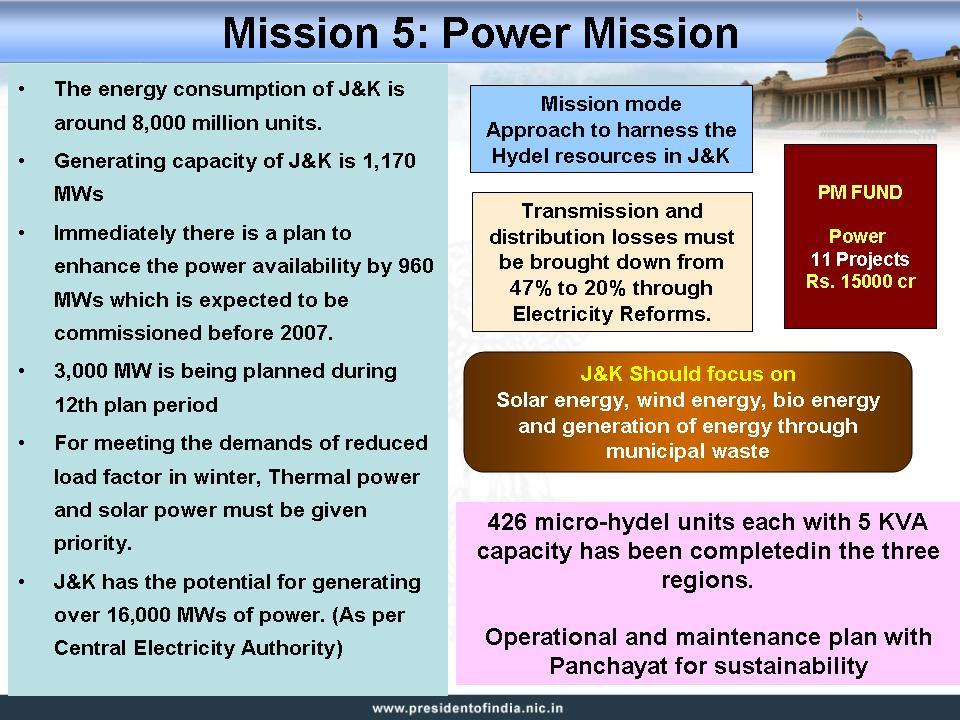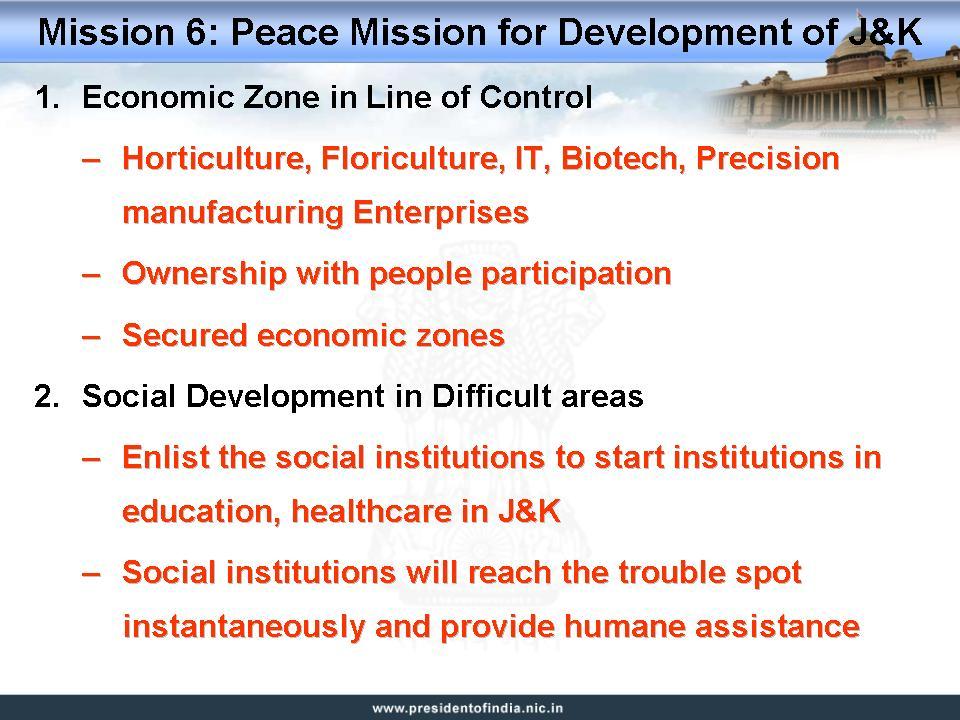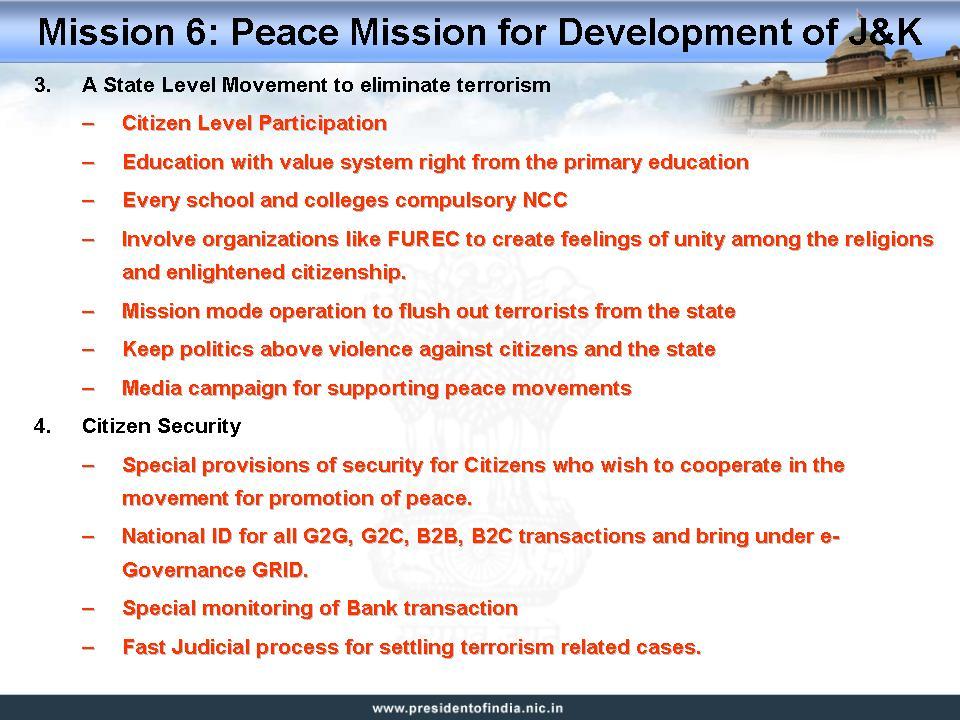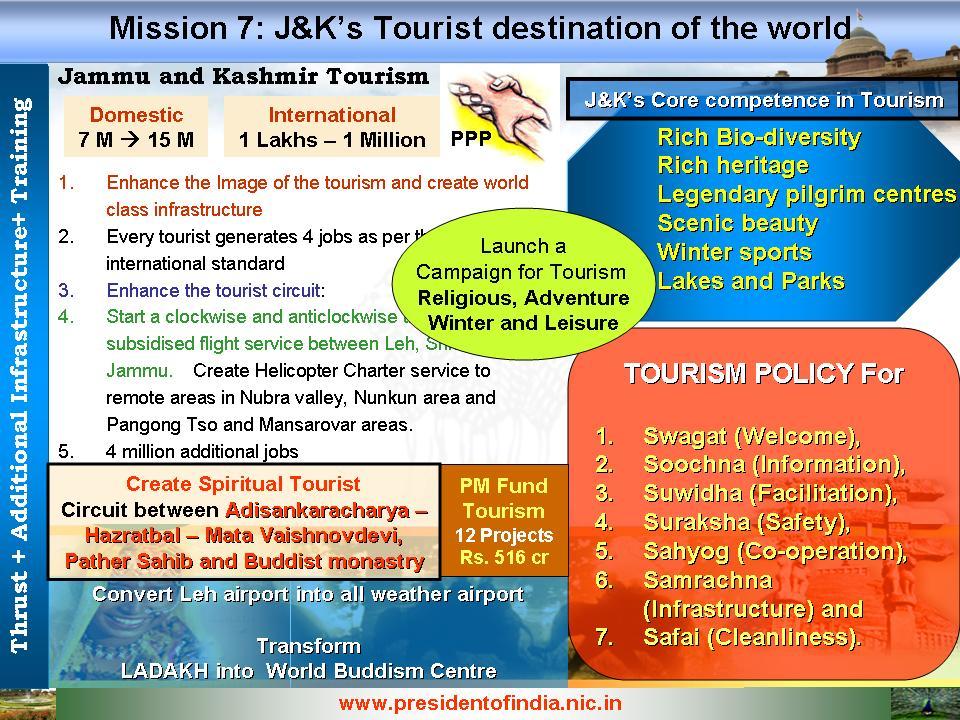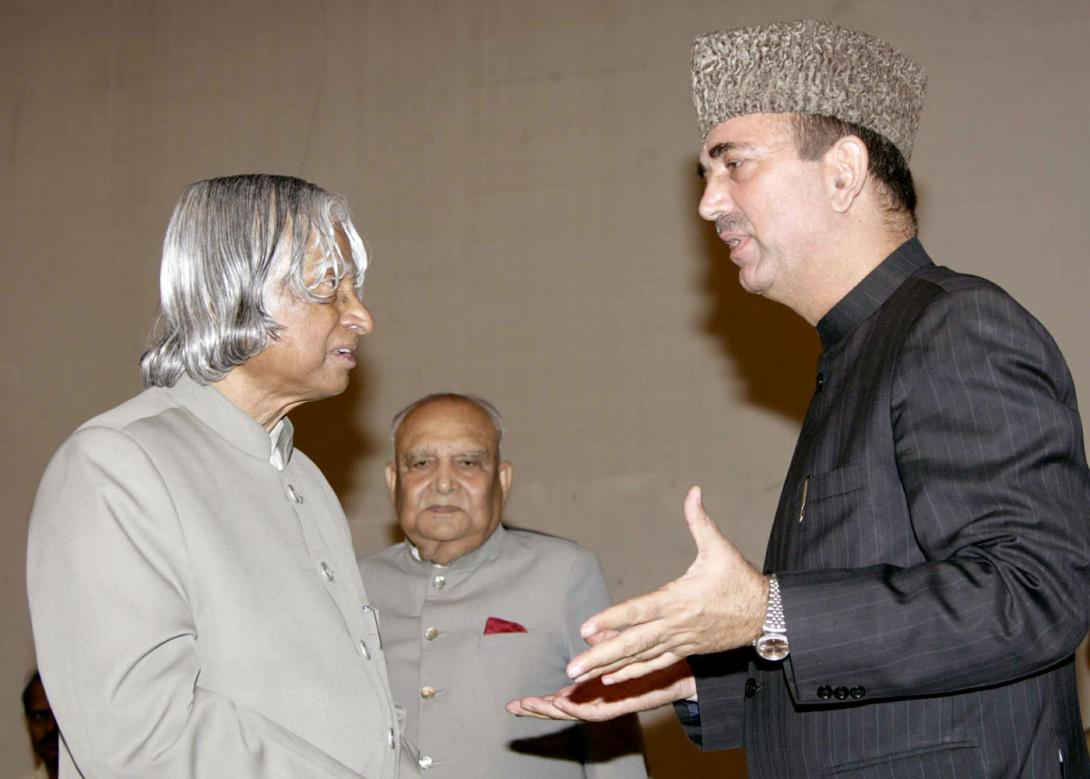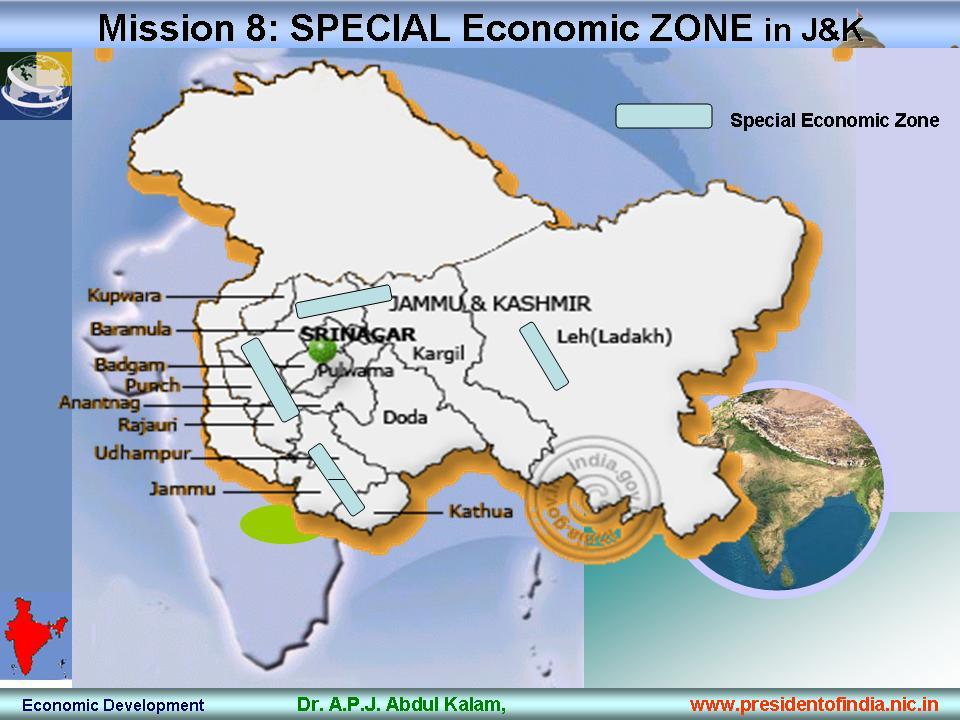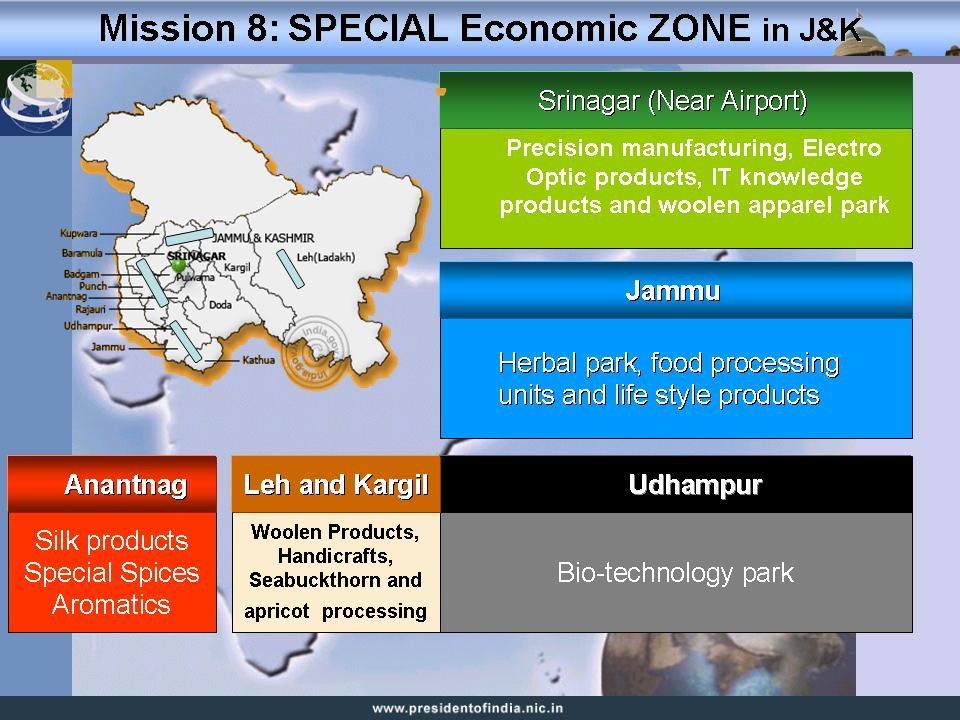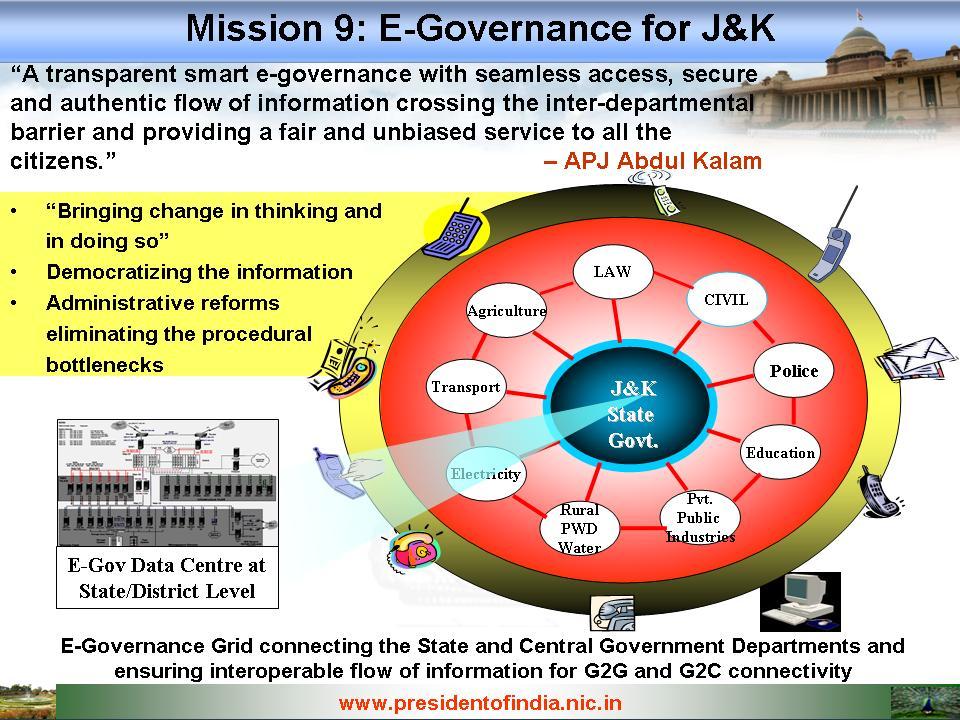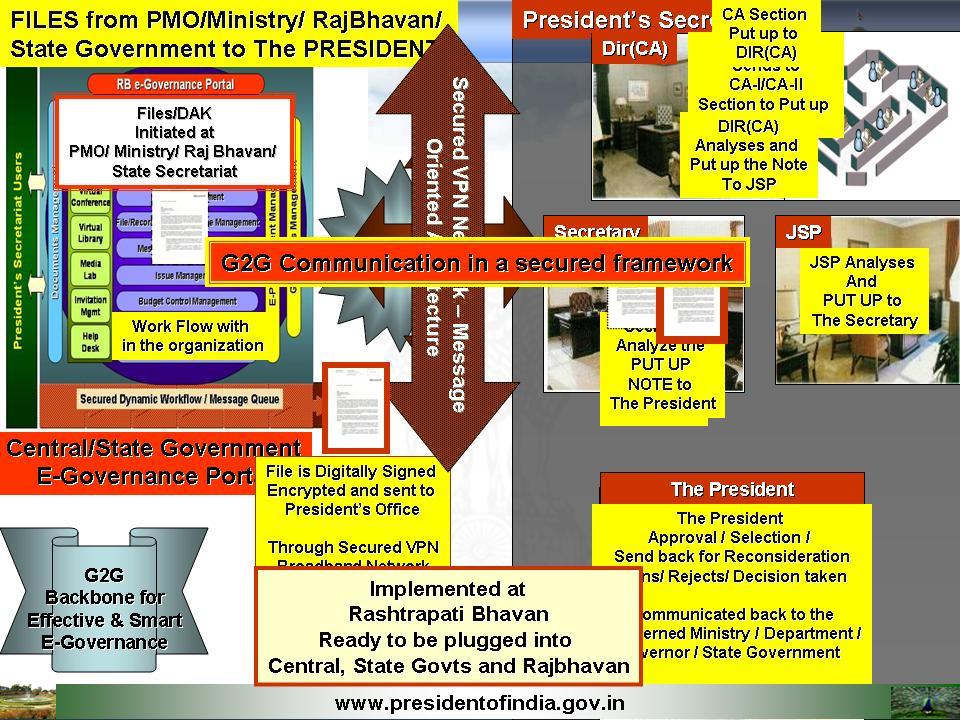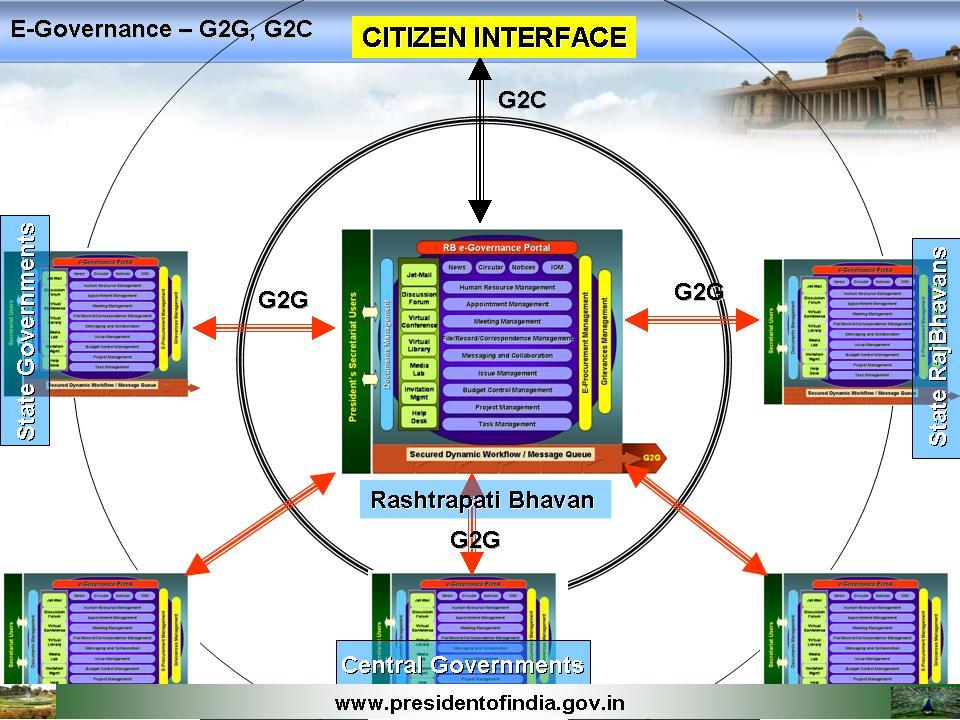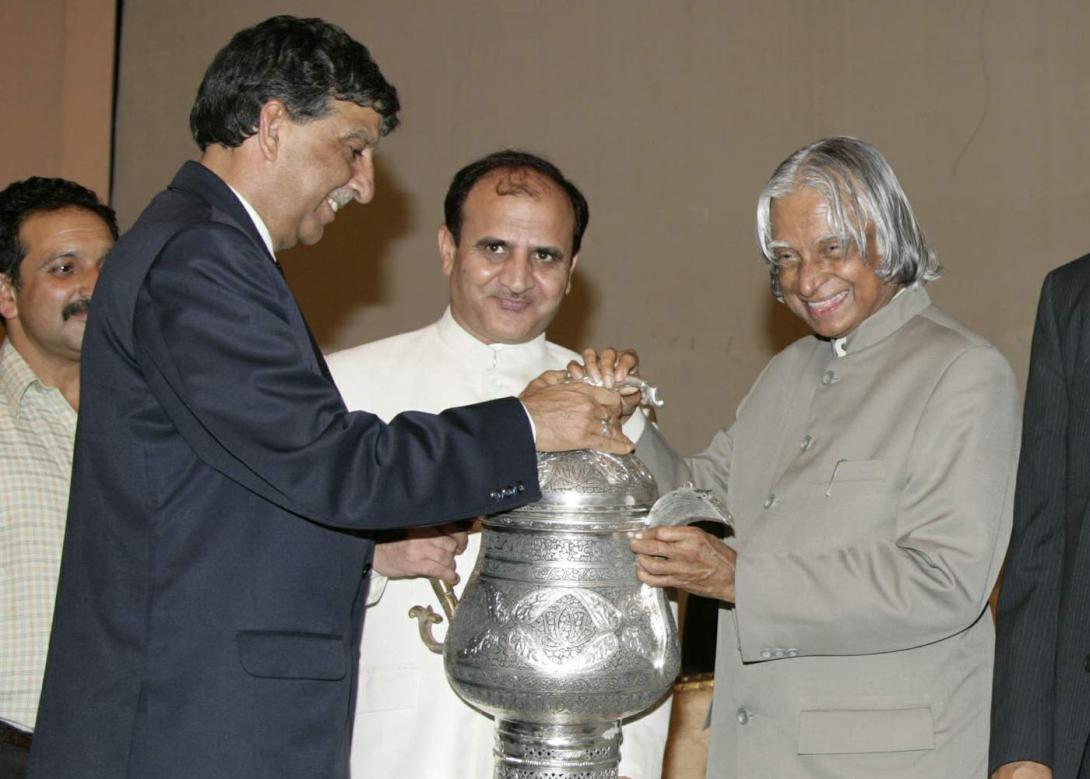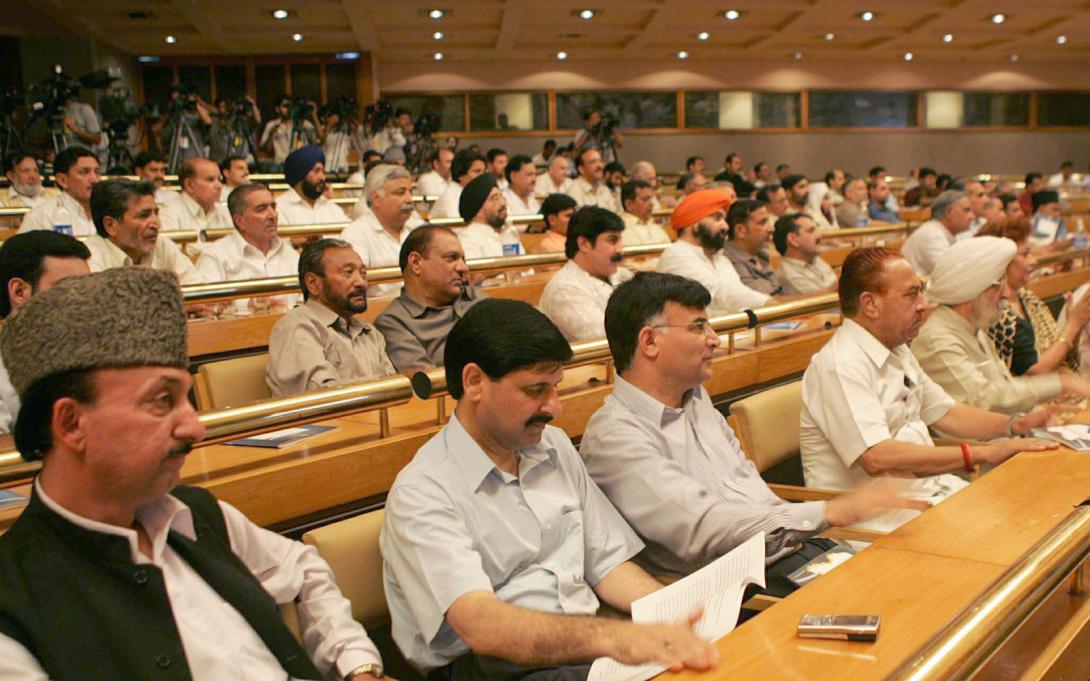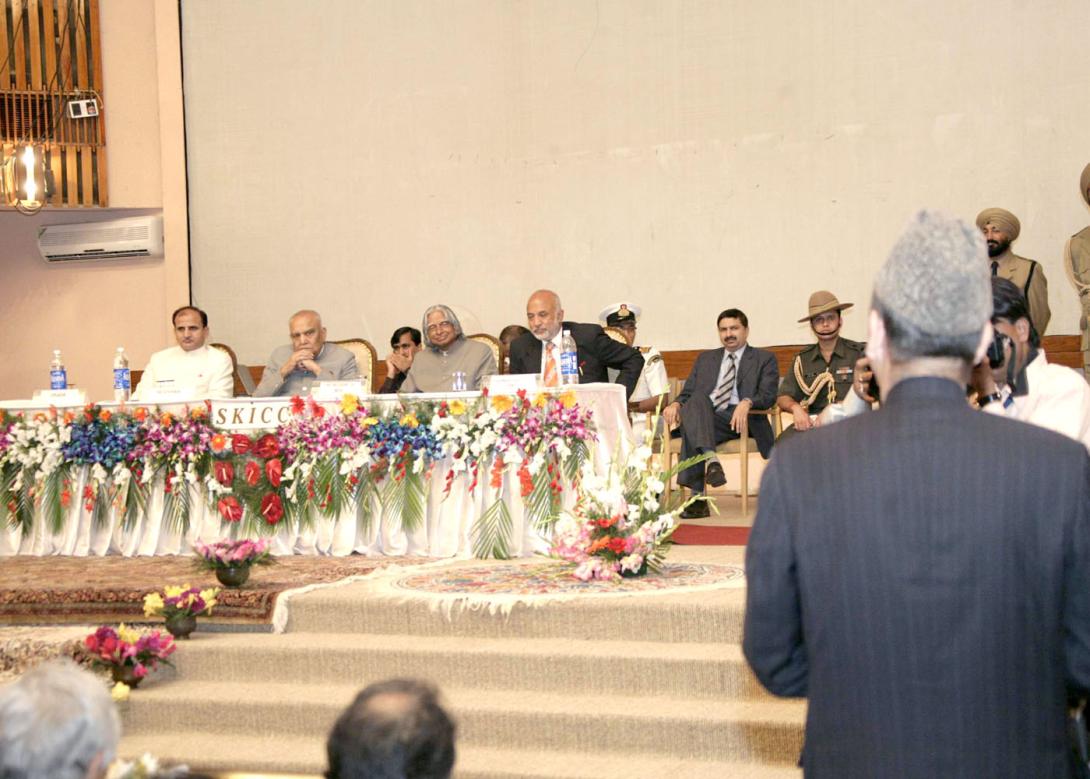Address to the Joint Session of Jammu and Kashmir Legislature, Srinagar
Srinagar : 28-07-2006
Missions for Jammu and Kashmir's Prosperity
"When you are inspired by some great purpose...,
...Dormant forces, faculties and talents become alive."
I am delighted to be in Srinagar today and to have the opportunity to address the Honourable Members of the Legislative Assembly and Legislative Council of Jammu and Kashmir. The scenic beauty of Jammu and Kashmir, the determination of the great, resourceful people of the state to march forward despite challenges and the significant advances made by the state in many fronts, are indeed important to progress further. You are all members of a great institution that gives vision to your state and evolves the legal framework and policies and programmes of Jammu and Kashmir. You oversee financial resources and implementation of major tasks. Your mission is to make the aspirations and dreams of the people of your state become a reality. My greetings to all of you.
Jammu and Kashmir: Integrated strength
I have visited Jammu and Kashmir many times. The Hazratbal Shrine on the banks of the Dal Lake which houses the holy relic of the Prophet inspired me with divine feelings. I recall my visit to the Mata Vaishno Devi Temple, where Goddesses Maha Kali, Maha Lakshmi and Maha Saraswati are venerated. I also visited Gompa (the Buddhist Monastery) at Leh, I met the venerable Kushok Bakula Rinpoche who was recognized by the 13th Dalai Lama as a reincarnation of Bakula Arhat. When I visited Gurudwara Shri Patthar Sahib I heard the venerable incident involving Guru Nanak Devji. All these four centres reveal a spiritual connectivity, which historically Jammu and Kashmir cherishes. I am sure the symbol of peace emanating from the spiritual centres will bind the people and bring prosperity.
I had recently visited Tangdhar, Uri and Urusa met and interacted with the people and children affected by the earthquake. I saw the people engaged in the reconstruction with government efforts. I found how people are brave inspite of such disasters and problems they faced being very close to the border areas. Definitely these places need physical and electronic connectivity and generation of employment potential in all the seasons.
I also recall my visit to the Field Research Laboratory at Leh where I saw the green house cultivation of vegetables and afforestation in progress. Nang village in Leh had witnessed unique afforestation of the Willow and the Poplar and water harvesting in the cold desert at a height of 13,000 feet. Due to the hard work of villagers under the guidance of defence scientists a 4,500 gallon water reservoir has been created in the village, which is used for cultivating 50 hectares of barren land. The laboratory has developed a nutritious beverage called Leh Berry, using Seabuckthorn a weedy bush that grows in plenty in this region. This soft drink is very popular in many parts of our country. I am happy to note that 48 percent of the total vegetable requirement of Ladakh region (3000 MT) is being met by locally grown vegetables using the technology developed in FRL. Definitely this laboratory has got the potential to transfer the technology to many parts of Ladakh region and other parts of J&K.
Siachen Glacier: I had a unique experience of visiting Kumar Post on the Siachen Glacier on 2nd April 2004. This is the highest post held by the Indian Army on the Siachen Glacier. The post is located at 17,000 feet. At the time when I visited the Post, it was snowing and the temperature was minus 35 degrees centigrade. When I reached the field station, three soldiers - Naik from Karnataka, Williams from West Bengal and Salim from Uttar Pradesh - shook hands with me. As soon as they shook their hands with me, it became Agni that transformed into warmth and penetrated into me. This warmth gave me the confidence that our nation is safe in the hands of the soldiers who are defending our frontiers in the difficult environment and terrain at the highest altitude with will power. They are giving the best part of their youth for the defence of the nation. Every time I visit J&K, it brings to me the inherent strength of the state in the fields of spiritual unity, courage to face problems and succeed, availability of technological competence in the area of agriculture and bio-diversity and above all, I was inspired to see in Siachen our brave soldiers defending India's border at the high altitude.
Focus of my Presentation
Now I would like to share a few thoughts with the Honourable Members of Jammu and Kashmir Legislature on the topic "Missions for Jammu and Kashmir's Prosperity" with reference to the core competence of the state and national vision.
My presentation is based on the following: -
a) Increasing the per-capita income of the State from the present Rs. 16,190 to Rs. 50,000 by 2012.
b) Realizing the goal of total literacy before 2012 and giving highest priority to women's education in Ladakh, Jammu and the Kashmir Valley.
c) Empowering all citizens with quality education, healthcare and employment potential.
d) Reducing the number of people living below the poverty line from the existing 5% percent to near zero by 2012.
e) Promoting peace and harmony in JAMMU AND KASHMIR conducive for sustainable faster development and growth.
Our National Mission - Challenges
Our nation is going through a major challenge of uplifting 220 million people who are below the poverty line out of the total population of billion+. They need habitat, they need food, they need healthcare, and they need education and employment finally resulting in a good life. Our GDP is growing at nearly 8 percent per annum. Economists suggest that our economy has to grow at the rate of an additional minimum of 2 percent per annum consistently, for over a decade, to uplift the people from below the poverty line.
Integrated Action for Development
Our mission of transforming India into a Developed Nation is to meet the needs of all the billion people. We have identified five areas where India has core competencies for integrated action: (1) Agriculture and food processing (2) Education and Healthcare (3) Infrastructure for all parts of the country such as reliable and quality electric power and surface and air transport (4) Information and Communication Technology and (5) Self-reliance in Strategic sectors. These five areas are closely inter-related and when effectively addressed, would lead to food, economic, energy and national security and lead to sustainable prosperity.
Engines for Growth
Emphasis should be on full utilization of natural and human resources of the region to meet the demands of modern society. We should also remember that about 50 percent of our population consists of young people, with aspirations for a better life. This is also true in the case of Jammu and Kashmir. The development process has to bring hope, opportunity and happiness to these aspiring youngsters. It should expeditiously address the challenges for leap frogging through conventional and technological means. Value addition to horticulture and floriculture, enhancing tourism potential, cottage industries, handicrafts, wool and sericulture on the State's core competencies and technologies, will lead to higher incomes and employment opportunities and therefore higher growth rates. The engines for growth will be the launching of the five national missions viz. water, energy, education and skills, infrastructure and employment generation. Developed Jammu and Kashmir will result in a developed India.
One of the questions that Members may ask is how can we generate funds required for all the schemes, the answer to which I would like to share with you. I would say that the answer is the Union Government's Bharat Nirman Programme with an outlay of Rs. 1,74,000 crore for the period 2006-2010, the Jawaharlal Nehru National Urban Renewal Mission covering 63 cities with an investment of Rs. 17000 crore, the Rural Employment Guarantee Scheme for 3 out of the 14 districts of the State and increase of bank credit for agriculture to Rs. 1,75,000 crore during 2006-07. Certain amount of funds have been allocated for the development of Jammu and Kashmir in these programmes.
In addition, a time bound reconstruction package has been announced by the Honourable Prime Minister amounting to about Rs.24, 000 crore. The reconstruction plan envisages concrete actions to address the problems faced by the state in power, transport, education, health, rural and urban infrastructure, employment, agriculture, industry and relief and rehabilitation sectors. Members of the Assembly and the Council, and the bureaucratic and the administrative system have to ensure that funds are sought in time and are effectively utilized for the purpose for which they have been allocated.
Now, I would like to discuss the core competence of Jammu and Kashmir.
Core competence of Jammu & Kashmir
Jammu and Kashmir is the Northern most state of our country consisting of three divisions Jammu, the Kashmir Valley and Ladakh. Kashmir is known for its pristine natural beauty and rich cuisine. It has common borders with Himachal Pradesh, China and Pakistan. Total area of the state is approximately 2,23,000 square km. Jammu offers the widest diversity of terrain and beauty. The entire region is pocketed with lakes and valleys, some still unexplored. The Jammu region is situated on the North Indian plains, close to the Shivalik ranges. North of the Shivaliks, the rest of the Jammu region is drained by the Chenab River whose vast catchment area includes several narrow valleys that extend deep into the Himalayas. The Kashmir valley with the Jhelum River is the most populous area and the economic heart of the region; it produces abundant crops of wheat and rice, apple and other horticultural crops. The noted handicraft industry, particularly the making of woolen cloth and shawls is the speciality of Jammu and Kashmir. Ladakh is the Northern most part of the state, with beautiful mountains. Hilltop monasteries and a colourful way of life, completely at one with the surroundings, make Ladakh one of the best living traditions of Tibetan culture. The mighty river Indus flows right through Ladakh.
Developed Jammu and Kashmir leads to Developed India
What can be the mission to transform Jammu and Kashmir into a developed State? Since the number of people living below the poverty line in the State is about five percent, our mission should be focused towards development leading to higher per capita income and better quality of life. As per the data available from the employment exchanges of Jammu and Kashmir, the number of youth who need employment is around 1,15,000. However, it may be possible that many in the remote areas have not registered themselves. Hence, we may have to provide employment for at least 5 lakh youth who are presently under-employed or unemployed. Jammu and Kashmir can definitely transform itself into an economically developed model State. At this stage, let me share with you the Development Radar brought out by the Planning Commission.
The boundary of the octagon projected on the Development Radar indicates the maximum achievements of various indicators of development. The smaller octagon represents the national average. While we appreciate your achievements in providing safe drinking water and increased life expectancy of your people, you need to achieve much higher results in the area of pucca houses, literacy, formal education, particularly infant mortality rate, per capita expenditure and poverty alleviation. The Honourable Members need to realize that Jammu and Kashmir has the potential to achieve all these aspects by using the natural resources and youth power available in the State and deciding to work in synchronization for its development as the prime mission.
Missions for Jammu and Kashmir
Let us study what are the missions which Jammu and Kashmir can undertake based on its core competence. The following are some of the important missions: -
(a) Horticulture Mission
With its rich soil and a unique climate, Jammu and Kashmir can definitely become the horticultural hub of the nation and the world. For realizing this, it is essential that horticultural products namely fruits, vegetables, spices and flowers are focused as an integrated mission. This will enable application of research, technology and management for promoting high quality horticultural products in a coherent manner.
Fruits: Jammu and Kashmir is popular for fruit crops such as apples, walnuts, pecanuts, hazelnuts, kiwi fruit, olives, grapes, almonds and apricots. Presently, fruit crops are grown in approximately 2.6 lakh hectares providing 13 lakh metric tonnes of fruits, yielding an annual income of Rs. 1900 crore. Our aim should be to enhance the area under fruits to 3.6 lakh hectares in a period of three years and provide value addition to the fruits through fruit processing leading to a revenue increase of Rs. 12,000 crore. The actions needed for realizing this will be: -
i. Creation of water bodies.
ii. Identification and preparation of additional land from the overall cultivable wasteland available in the State.
iii. Removal of the restrictions on providing subsidy to small farmers holding less than five hectares of land.
iv. Preparation of nurseries with adequate seedlings.
v. Tying up with research and academic institutions for creating new varieties for increased productivity.
vi. Preparation and use of bio-fertilizers and bio-pesticides
vii. Post-harvest facilities such as storage, packaging and preservation even in out-stations like Kolkata
viii. Fruit processing and marketing through the co-operative network, and
ix. Integrated funding mechanism including bank loans with the subsidy provided by the Government of around Rs. 22,500 per hectare spread over three years (50, 20 and 30 percent respectively) for plantations.
Such integrated actions will enable farmers to increase productivity from 5 million tonnes of fruit per lakh hectare to nearly 8 million tonnes per lakh hectare and increase the area under fruits from 2.6 million hectares to 3.6 million hectare. Also, if fruits are processed, total revenue will increase from the present Rs. 1900 crore to nearly Rs. 12,000 crore benefiting over 7 lakh farm families.
Vegetables: Similarly, there is a need to increase the area under vegetable cultivation, particularly in the Kashmir and Ladakh region from the existing 20,000 hectares to at least 60,000 hectares in a period of three years which can be a large revenue earner for the State both from off-season vegetable and seeds. Productivity can be increased from the present 20 tonnes per hectare to at least 50 tonnes per hectare progressively during the next five years through the use of quality hybrid seeds and special irrigation facilities. This will lead to enhancement of vegetable production from the existing 4 lakh tonnes to 30 lakh tonnes. Revenue will increase from Rs. 400 crore to Rs. 3,000 crore due to enhanced productivity and increased area. Revenue can be further increased through value addition and food processing. This will provide productive employment to over 60,000 families having three lakh people.
Saffron: Another important produce unique to Kashmir is Saffron, which is produced in nearly 3,830 hectares. However, the quantity of production has been fluctuating and presently the average production is 90 quintals per year. Research is needed to spread the cultivation of Saffron to neighbouring areas. Research should concentrate on selection of local germ plasm, use of biotechnology for developing high yield varieties and creation of irrigation facilities for Saffron growing areas. In addition, Saffron is sensitive to availability of irrigation throughout the crop period and rain is needed before blossoming of the flowers. Rainfall is also needed during spring for preparation of good quality saffron seeds. To achieve this, we should provide organized irrigation to the saffron growers. They should also be provided with large community sprinklers so that sprinkled water can be made available when rain does not fall on time. If all these things are done, we can increase the area under saffron from the present 3830 hectares to at least 5000 hectares. Revenue from Saffron can also be increased to Rs.80 crore from the present Rs.36 crore. It will benefit around 10,000 families having 50,000 people.
I understand that the farmers in Uri are looking for an opportunity to export their produce to Pakistan, which will enable them to get a better price for their produce. The State and Central governments may like to consider this problem and find a solution, which will bring prosperity to the farmers of this region.
Floriculture: I find that at present, only 120 hectares are under commercial floriculture, growing cut flowers, Bulgarian roses and lavender flowers. The farmers of Jammu and Kashmir definitely have the potential to grow large volume of flowers for export. For improving flower production and export marketing there is a need to provide: -
(a) Cold storage at the airport so that flowers do not get damaged in transit,
(b) Increase the frequency of flights,
(c) Converting Srinagar into an international airport, and
(d) Liberalized import policy for hybrid seeds and bulbs
In addition, farmers in the Valley can consider inter-cropping with shallow root vegetables during the dormant phase. This will provide a revenue of Rs. 2,00,000 per hectare. I would suggest bringing at least 5000 hectares of land under floriculture, which will enhance revenue from floriculture to Rs. 100 crore from the present Rs. 2 crore. Agricultural universities in the State should become partners in this mission. They have to provide the know-how and the inputs needed for inter-cropping methodologies. This will provide a productive employment and revenue to over 10,000 families having 50,000 members.
Integrating Horticulture with Food Processing: While the mission encourages farmers to go for horticulture and enhance their income there is a need to integrate production activity with fruit and vegetable processing which will provide larger value addition to the product and also prevent distress sale by the farmer when faced with large quantity of fruits and vegetables produce. These food processing units can be created as a co-operative venture of farmers in different districts so that the benefits of value addition will largely reach the farmer in addition to providing additional employment opportunities. Part of the funding can come from the four agro-food processing projects sanctioned at a cost of Rs.101 crore as part of the Prime Minister's Reconstruction Plan. In an integrated fashion the horticulture mission can increase revenue from the existing Rs. 2000 crore to Rs. 15,200 crore and generate employment and higher income generation for 7.8 lakh families. Additional land required for the enhanced horticultural mission can come from the 1.8 lakh hectares cultivable wasteland and fallow land available in the State.
2. Education and Entrepreneurship
According to the 2001 Census, the literacy rate in Jammu and Kashmir was 55 percent with female literacy being only 43 percent. There is a new phenomenon that I have observed that about 67,000 children are never enrolled in schools. We have to give priority to this category and ensure that every child is admitted to a school. In addition, urgent action is needed to reduce the drop out rate which is reported to be around 36 percent.
Primary Education: Our aim is to develop human resources with a value system and entrepreneurial skills. There is an urgent need to arrest the tendency of school dropouts and the generation of happy enlightened citizens. Some of the Non-governmental Organizations (NGOs) dealing with education should train children during their formative years between three and five years in good habits, etiquette, hygiene, creative learning and character building through a harmonious educational atmosphere. Jammu and Kashmir should apply this technique of pre-education training in all districts. This is definitely a societal mission. I have seen this type of training being provided by Dr. M.R. Raju in Andhra Pradesh which has reduced drop out rates.
Secondary Education: Another model for secondary education which I would like to suggest is the incorporation of accelerated learning through computers which has been used in many government schools in Karnataka in partnership with the Azim Premji Foundation. In this model, reduction in dropouts is being realized through active participation of parents, teachers and a social organization in the region. This technique can be adopted in all the districts of Jammu and Kashmir, so that drop outs at middle and secondary school level do not take place. Jammu and Kashmir may consider special training programmes for teachers so that they can impart employable skills among children. These programmes can be carried out both as direct contact programmes and as virtual learning programmes to enable availability of teachers in the class without difficulty. To remove adult illiteracy, a mission has to be taken-up by all children in higher classes namely 9th, 10th and Colleges to teach at least five persons every year who cannot read and write in addition to the adult literacy programme of the Government. Such a multi-pronged strategy will enable the State to achieve at least 75 percent literacy by 2010 particularly among women and cent percent literacy by 2015. The State Government may consider introduction of mobile schools particularly in tribal areas for reducing dropouts in addition to other interventions such as providing seasonal hostels for students.
Institutions of Advanced Learning in Jammu and Kashmir: The Jammu and Kashmir Government can consider establishing centers of excellence in engineering, medicine, science and humanities in partnership with reputed institutions in different states and foreign universities. We should provide quality education to students as a part of Global Human Resource Development, who will be not only working for Jammu and Kashmir, but also for many states and foreign countries in the manufacturing and services sector. The seven education projects costing Rs.142 crore under the Prime Minister's Reconstruction Plan should be utilized for this purpose. This approach will provide a benchmark for other colleges and institutions in the state leading to quality improvement in higher education as a whole. In addition, all Universities and their affiliated colleges in the state must progressively get themselves ISO certified. Similar to higher education, centers of skill excellence can be created through the upgradation of polytechnics and Industrial Training Institutes (ITIs). Recently I inaugurated an EDUSAT hub. Two hubs have been established, one at Jammu and the other at Srinagar, each catering to around 50 satellite interactive terminals for collegiate and secondary school education. Tele-education is very important for the whole of Jammu and Kashmir.
Entrepreneurship: Academic institutions in the state generate about 35,000 graduates per year and 10th class and 10+2 students will be around 65,000. Over one lakh youth will seek employment either within and outside the state or abroad every year. School and university syllabi have to be integrated with entrepreneurship courses. At the end of the course students should get a certificate or a diploma. This will enable students qualified in the state's schools and colleges, to have the confidence that they can start small enterprises in agriculture, manufacturing or service sectors based on the core competence of a particular region. Banks have to be entrepreneur friendly and should give them venture capital and support these young entrepreneurs and their creative ideas. The self employment scheme started by the State Government with a target of providing employment for 10,000 youth is a welcome project. This should be augmented with the six other employment projects valued at Rs. 240 crore sanctioned under the Prime Minister's Reconstruction plan.
3. Global Human Resource
As Members are aware, there is a need for quality human resource in the country in all sectors of the economy namely agriculture, manufacturing and services. Since there is a mismatch between availability and the requirement of human resource, cost of hiring is going up, which is not sustainable in the long run. We have to face this challenge and the higher education system and the technical skill education system have to gear up to generate manpower with employable skills in quantity and quality at all levels. The education system has to be relevant to present day manpower needs and be sensitive to global changes that are taking place in every sector of the economy.
At present India has 540 million youth under the age of 25 which will continuously grow till 2050. In Jammu and Kashmir alone, we will have around 5 million youth. Keeping this resource in mind, universities and educational systems in the state should create two cadres: (1) a global cadre of skilled youth with specific knowledge of special skills and (2) another global cadre of youth with higher education to take up research and leadership roles. These two cadres will be required not only for powering all sectors of our economy, but also to be a reservoir of knowledge for the rest of the world.
Universities, colleges and training institutions will have to work towards increasing the through put of the higher education system from the existing 6 percent to 20 percent by 2015, 30 percent by 2020 and 50 percent by 2040. Youth who are not covered by the higher education system should all have world class skill sets with quality workmanship in areas such as construction, carpentry, electrical systems, repair of mechanical systems, fashion design, para-legal, para-medical, accountancy, sales and marketing, software and hardware maintenance and service, software quality assurance, craftsmanship and tourism. No youth from Jammu and Kashmir should be without either a world class higher education or without world class skill sets. This is a mission that must be undertaken by universities and colleges in the state. This will enable provision of productive and high value employment to the one lakh youth who are coming out of schools and colleges every year. At the Government level all efforts should be made to remove shackles in the growth of educational institutions by giving greater autonomy and removing controls.
IT Employment: As per the recent NASSCOM - McKinsey Report 2005, India has the largest talent supply for offshore IT and BPO. The IT and BPO industry will be creating over 9 million jobs by 2010 exceeding planned employment creation across all special programmes of the State and Central Governments. It will also create 6.5 million indirect and induced jobs to support offshore IT and BPO industries in 2010. This will include employment in several sectors such as construction, retail and transport. I have observed that special IT education is being provided to 800 students per year for a period of 3 years. Jammu and Kashmir with its vast young human resource to train, can train at least 25,000 IT professional in the state, so that they can get quality employment in the IT sector by the year 2010. I would recommend increasing the capacity of IT training to 8000 students per year and it being continued to 2011. The State Government can have an investors' meet and present the advantages which an IT company can get in the state such as exemption in taxation, single window clearance, exemption from obtaining prior approval for setting up captive power plants by IT companies, greater transparency in government transactions, and economies of operation. This approach should enable the state to attract industrialists for establishing IT Industries and a large number of BPO's in the state. Quality education skills can be provided by programmes in collaboration with NASSCOM, CII, IT companies and other social organizations in a mission mode. The Vice-chancellors of the five universities must create awareness among the youth and facilitate industry-academia partnership for promoting IT industry in the state.
4. Healthcare Mission
Jammu and Kashmir has 410 Primary Health Centers (PHCs), 2211 Medical Aid Centres and Sub-centres and 14 District Hospitals and 80 SubDistrict Hospitals. It is important that we make the PHCs and Medical Aid Centres fully functional so that inhabitants of rural areas can benefit. District hospitals can be equipped with mobile clinics, which can reach remote areas. Doctors definitely have to be at the PHCs at least for three years or a contract can be given to private corporate hospitals to run Medical Aid Centres and PHCs etc. I am happy that six projects have been sanctioned for improving the civic amenities in places like Jammu, Srinagar, Ladakh and developing a model village in each block with adequate infrastructure and amenities at a cost of Rs.4883 crore. This is a welcome move for improving the health condition of certain cities and model villages in the Jammu and Kashmir State. The Hill Development Councils of Leh and Kargil have to formulate a comprehensive infrastructure plan for the development of the Ladakh region.
Uttaranchal Mobile Clinic: On 19th October 2002, I participated in the launching of a Mobile Clinic and Research Centre in Uttaranchal. This effort was piloted by the Technology Information Forecasting and Assessment Council (TIFAC), the Government of Uttaranchal, the Birla Institute of Scientific Research and many other agencies. After 44 months of its operation, I have found that this mobile clinic has been used in six districts of Uttaranchal and has treated more than 50,000 patients. Among those treated, 48 percent belong to the Below Poverty Line (BPL) category. Users are mainly from remote hill regions. The clinic has provided 10,000 ultra sound, 6,000 X-rays, 2000 ECGs and nearly 20,000 lab tests. The mobile clinic has documented the disease profile of patients in the region (six districts) which fall into the following categories: acute peptic ulcer, anemia, anti-natal, chronic obstructive pulmonary diseases, hyper tension, pelvic inflammation, renal calculi, upper respiratory tract infection and worm infection. This type of analysis has been possible because of a computerized system of clinic management introduced right in the beginning. The mobile clinic has also been used in regions which are normally inaccessible and where organized medical facility is not available. I consider this as the best form of reaching healthcare to needy people.
This is a low cost solution with committed healthcare personnel and institutions. Each district in the state can have at least one mobile unit to begin with. Funds for this project can be drawn from the four health projects sanctioned at a cost of Rs. 120 crore as part of the Prime Minister's Reconstruction Plan. This plan also caters for creating nearly 14,000 jobs for paramedical people in 6800 Anganwadis. The clinical data provided by this model will be applicable for many areas. Mobile clinics will also provide research input for certain diseases prevalent in certain areas such as pulmonary edema, tuberculosis etc. This will become an important step towards reaching healthcare to the people located in remote parts of the state. These mobile hospitals can also participate in the immunization and control programme against polio, tuberculosis, smallpox and leprosy. It is good to note that telemedicine facilities have been established in 12 hospitals in Jammu and Kashmir, with Sher-e Kashmiri Institute of Medical Sciences (SKIMS) providing speciality health services networked with AIIMS Delhi. The state should extend this service to all the district hospitals in one year time. The state also has the experience of army telemedicine network with Research and Referral Hospital, New Delhi connected with Command hospitals at Udhampur and Srinagar, base hospitals in Leh and field hospitals in Kargil and Parthapur near Siachen.
There is a need to create specialty and super specialty hospitals near cities and district head quarters as public-private partnerships. These hospitals can be connected to block level hospitals and mobile diagnostic units through tele-medicine connectivities for making state-of-the-art medical advice available particularly to people living in rural areas. There is also a need to improve infrastructural facilities in existing medical colleges particularly in the area of cardio thoracic surgery, neuro surgery, paediatrics and cancer treatment.
5. Infrastructure Development
Physical Connectivity: Jammu and Kashmir has a network of approximately 32,000 km. which includes 15000 km. of national highways. The state has 0.32 km. per square km. of area whereas in Switzerland it is 1.72 km. of road. This is the type of road network density needed for giving a major thrust to tourism and economic upliftment of the state. I also observed that among the 9,270 habitats only 5,514 are connected with roads. There is a need to connect 3,756 remaining habitats. While planning connectivity for these villages, a PURA Cluster approach may be adopted. This should be taken up as part of the Bharat Nirman programme, infrastructure development project announced by the Prime Minister and the other scheme proposed by the State Government works through external borrowing. The aim of the Roads and Building Department should be to bring road density to 0.64 km. per square km. during the 11th plan period, either through Government or as a public-private partnership venture. The 13 road projects sanctioned under the Prime Minister's Reconstruction Plan at a cost of Rs. 998 crore should enable fast realization of this goal.
This will definitely provide the needed mobility for economic development of the rural sector. Special technologies must be used to ensure that the road network is operational throughout the year. Construction of an access road to Sawalkot Hydro Electric Power Project has to be speeded up so that the power plant is able to deliver full power through periodic maintenance and upkeep.
Establishment of PURA for Rural prosperity: One of the important solutions for the homogenous development of the state is the creation of Hill PURA and Plain PURA.
Jammu and Kashmir have around 6,600 villages spread in 14 districts. Around 7.5 million people live in rural areas. Hence I would recommend the creation of 150 PURAs for the entire state (70 for Jammu, 70 for Kashmir Valley and 10 for Ladakh). Essential Connectivities of PURA: The integrated methods, which will bring prosperity to rural India are - physical connectivity of village clusters having populations between fifty thousand and one lakh, through quality roads and transport; electronic connectivity through tele-communication with high bandwidth fiber optic cables reaching rural areas from urban cities and through internet kiosks; knowledge connectivity through education, vocational training for farmers, artisans and crafts persons and entrepreneurship programmes. These three connectivities would lead to economic connectivity through starting of enterprises using the local core competence and with the help of banks, micro credit and marketing of products. There is an urgent need to increase the tele-density in the state as a whole.
After initial short-term employment during construction etc., we may have to plan for initiating actions for providing regular employment opportunities for at least 5,000 people in each PURA. The employment in the support sector will be around 10,000. We need to promote entrepreneurship in rural areas. Each PURA should be supported by one or more food processing enterprises, power loom, handloom enterprises, handicrafts and sericulture enterprises.
Indo-Japanese Collaborative Experience: As an example, I would like to mention the handicraft promotion work taking place at Chhindwara and Seoni in Madhya Pradesh, as a collaborative venture of the State Government, Central Government and JETRO of Japan. Here the development of interior life style articles is taking place with the intervention of JETRO technical experts. After prototypes are made, the product is being sent to Japan for presentation in exhibitions for getting a feedback. The feedback is used to further improve the product for making it acceptable for sale in the international market. A similar model has been followed between Thailand and Japan which has resulted in the development of 26 products being produced in 26 villages with an annual turn-over of Rs. 300 crore.
What is needed is application of technology for quantity, quality and variety production of these products for servicing in the national and international markets with management stewardship. The Institute of Fashion Technology, New Delhi, National Institute of Design, Ahmedabad and Khadi and Village Industry Commission, Jammu and Kashmir can work with Rural Development Commissioners for selecting and promoting products in the national and international markets. Each village cluster depending upon the region will cost between Rs.80-100 crore. The convergence of funding for PURA will come from the Bharat Nirman Programme and other rural development programmes of the Central and State Government schemes and the Prime Minister's Special Relief Package. This programme apart from benefiting the village cluster will provide productive tasks to widows and other citizens in villages in life style enrichment products, preparation of woolen and silk garments, making herbal preparation and aromatic products of international standard.
Power: I am happy to see that infrastructure development is taking place in the state at a fast pace. The energy consumption of the state is around 8,000 million units. The present generating capacity is 1,170 MWs from state and NHPC. Immediately there is a plan to enhance the power availability by nearly 1000 MWs which is expected to be commissioned before 2007. Also, planning has commenced in respect of projects with a capacity of 3,000 MWs. I understand the cost of land for these project is prohibitively high. As per Central Electricity Authority, Jammu and Kashmir has the potential for generating over 16,000 MWs of power. I would consider that there must be mission mode action to harness all the available power from hydel sources which can help the country towards its goal of energy independence by the year 2030. I understand that the State Government is in the process of carrying out electricity reforms which will enable reduction of large scale transmission and distribution losses which stands at 47% now. This is a welcome move. During my visit to Gujarat, I have found that there is a marked improvement in the financial and operational performance of electricity boards. There has been no increase in tariff in spite of rising input costs. The sector which was incurring a loss of nearly Rs. 1,900 crore in 2003-04 is showing a profit of Rs. 200 crore now in 2005-06. I am sure Jammu and Kashmir can definitely emulate this model. The emphasis should be on quality power with zero interruption at an affordable cost to all users including rural citizens especially since you have large amounts of hydel capacity. We should make full use of the 11 power projects sanctioned at a cost of Rs.15,000 crore under the Prime Minister's Reconstruction Plan for making Jammu and Kashmir a power surplus state.
I understand that 426 micro-hydel units each with 5 KVA capacity has been completed in the three regions of the state through Operation Sadhbhavana, Border Area Development Project and Ministry of Non-conventional Energy Sources. At present, the projects are being built and maintained by the Army. There is an urgent need for the nomination of village level committees to take over the projects and maintain them in a self-sustaining manner. This will enable faster completion of the remaining 574 micro-hydel units required for different regions of the state. The state must also think of solar energy, wind energy, bio energy, thermal plants outside the state and generation of energy through municipal waste in some of the large towns. These interventions will ensure that the state will be energy surplus at all times, particularly since most of the energy for the state is coming from hydel sources which has a low load factor during non-monsoon months.
Sunderban in West Bengal with its remote location, difficult landscape and inadequate infrastructure is using solar power as an alternate energy source for its population. Such a model can be used in the remote areas of Jammu and Kashmir also since Sun is available for over 300 days in a year.
6. Peace Mission for development of Jammu and Kashmir
For promoting faster development of the state, it is essential to have a peace mission for development. This mission will have four major components namely: economic zone near the Line of Control, social development in difficult areas, state level movement to eliminate terrorism and citizen security.
Economic zone near the Line of Control: Presently, the area close to the Line of Control is not used for cultivation at all. The State Government may consider allotting the land on lease basis in consultation with the Army for horticulture and agriculture utilization. Once, the people participate in the development of the land they themselves will oppose intervention from wrong elements. There is also a need to provide special security in this economic zone.
Social development in difficult areas: Social minded religious and other institutions can start educational healthcare institutions in the state. Members of these institutions should also reach the trouble spots quickly and provide humane assistance to the affected people.
State level movement to eliminate terrorism: Citizens must be allowed to participate in large numbers for curbing terrorism. Schools and colleges should promote value based education right from primary education. Also, to promote discipline among students, Central and State Governments can consider introducing minimum two years of compulsory NCC training for all students in colleges or the schools. The State Government should authorize law enforcement agencies to make the state free from terrorists in a mission mode approach. Politics should be above violence against citizens of the state. The State Government should create a conducive environment for all the Kashmiris who had left the state to return and contribute to the growth of the state. The police can consider the creation of open police control van patrolling services in small towns and crowded areas. There is also a need to develop highway police, highway tracking and surveillance system as also the possibility of having helicopter based surveillance system for early detection of trouble spots and render assistance. Police and intelligence agencies should work together, foresee the problems and defuse the situation.
Citizens security: Citizens who wish to co-operate in the peace mission must be provided special security. The state may consider introduction of National ID Cards for all Government to Government, Government to Citizens, Business to Business and Business to Citizen transactions. It is essential to create special monitoring methodology for unusual and abnormal banking transactions. The judiciary must consider creation of a fast judicial process for settling terrorism related cases.
7. Tourist destination of the world
Tourism is a major mission and has a tremendous potential for growth in this beautiful land. The unique contribution that Jammu and Kashmir has made to tourism is the preservation of pilgrim centres, and architectural and civilizational heritage. The State Government website gives some basic information about hotels and trekking routes etc, but it still does not exploit the visual power of the web. I would request the IT Savvy engineers from the state to create several walk throughs for the best tourist spots and also for the hotels and guest houses. An audio visual aid can be freely distributed to visitors so that they can also enjoy the tours in their own privacy. What is required now is to implement the new tourism policy of promoting seven key areas such as Swagat (Welcome), Soochna (Information), Suwidha (Facilitation), Suraksha (Safety), Sahyog (Co-operation), Samrachna (Infrastructure) and Safai (Cleanliness). A stress on product diversification and dispersal of tourism activities in far-flung areas can also enhance tourism in the state. Additionally, health tourism can also be a part of the tourism package.
With its unique "tourist selling propositions" the state can well afford to set an ambitious target of doubling its Indian tourist inflow to 15 million per year and enhancing foreign tourist inflow to 1 million per year by 2010. This would demand thrust and additional infrastructure, and high level of training to handle the higher volume. The unique selling propositions are global cultural linkages, heritage architecture, varieties of Indian food, spiritual solace, festival celebration, tribal culture, environment and handicrafts. This can be achieved through popular campaigns for attracting tourists, development of new tourist circuits, inviting the private sector for participation, arranging winter sports tournaments at Gulmarg and Pahalgam and conducting international ski events at Gulmarg.
The major action of the state is to create a friendly and secure atmosphere for tourists. This can be done by promoting an attitude amongst all citizens of the state to treat a visitor as a guest and ensure that his safety is their collective responsibility. Of course you have a tradition. I am happy that 12 tourism projects costing over Rs.516 crore have been sanctioned and are in progress as part of the Prime Minister's Reconstruction Plan. Comprehensive tourism mission will generate employment for four million people and enhance tourism revenue from the existing Rs. 1000 crore to nearly Rs. 10,000 crore per annum. You may consider the establishment of an institution exclusively for education and research on tourism related subjects.
Public-private partnership: It is essential to treat investments in tourism as a seed money for the development of Tourists Circuits in this region, but what is needed is a mission mode operation involving public-private partnership providing total services to the tourist in an integrated way with multiple ministry coordination on the lines followed by the Maldives. The State Government can develop a sound State Tourism Policy. Director General (Tourism) should become the nodal agency for formulation of plans for tourism and new amusement park facilities in major tourist spots. The hotel industry should be encouraged to meet their daily needs through the core competence of neighbouring villages. Tourist operators must acquire proficiency in multiple languages such as English, French and other foreign languages apart from the local languages. There is also a need to create a tourist police force knowing principal foreign languages for easy conversation and guidance.
8. Special Economic Zone
A method is required to be found for how investment can be attracted to the state for the faster development in all the three sectors of the economy. How can it be done? May I share a few suggestions with you? The State Legislature may consider forming five Exclusive Economic Zones. The suggested sites and products of these economic zones would be:-
Srinagar (Near Airport) - Precision manufacturing, electro optic products, IT knowledge products and woollen apparel park
Jammu - Herbal park, food processing units and life style products,
Udhampur - Bio-technology park,
Anantnag - Silk products, special spices and Aromatic products and
Leh and Kargil - Woollen products, handicrafts, Seabuckthorn and apricot processing
In order to build infrastructure and attract investment in these zones, the State Government may consider the following actions.
(a) Fast single window clearance for attracting investment. (A multi-ministry organization)
(b) Invite industrialists and entrepreneurs of Jammu and Kashmir origin who are within the country and abroad for a meeting leading to the decision of taking up the task of building and operating the Special Economic Zone in all three sectors of the economy.
(c) Every economic zone should have built-in area with power, water and physical and electronic connectivity.
(d) Members of the Legislative Assembly and Legislative Council irrespective of party affiliations will give an assurance by enacting pro-active policies for ensuring uninterrupted work culture in these economic zones with special security.
The aim of the economic zone should be to qualify the skill sets of the workforce to standards prescribed by the National Manufacturing Competitiveness Council. Institutions must converge, and the zone will have design, development, production and marketing capability. One of the zones may be allotted for the development of a science city. Each economic zone can lead to a turnover of Rs. 5,000 crore per annum.
9. e-Governance for Jammu and Kashmir
Good governance is being recognized as an important goal by many countries across the world. The state has taken up specific initiatives for transparent government. Freedom of information is being redefined and supported by detailed guidelines. The internet revolution has proved to be a powerful tool for good governance initiatives. An important dimension of the internet potential is the possibility of providing services any time anywhere. Along with this there is a conscious effort to put the citizen at the center of the focus of governance. Citizens are being perceived as customers and clients. E-governance has to be citizen friendly. Delivery of services to citizens is considered as a primary function of government. Particularly in a democratic nation of a billion people like India, e-Governance should enable seamless access to information and seamless flow of information across the State and Central Governments in our federal setup.
In summary, I visualize e-Governance as:
"A transparent smart e-governance with seamless access, secure and authentic flow of information crossing the inter-departmental barrier and providing a fair and unbiased service to the citizen."
Jammu and Kashmir needs an e-Governance based accelerated management system to administer finance and monitor and interface with Central and world institutions. I would like to propose a system which should encompass seamless G2G, G2C and G2B connectivity using National ID as a primary database.
Now, let me share with you my personal experience in setting up and operating a typical e-Governance Portal established at Rashtrapati Bhavan. We have built an e-Governance system to study all correspondence, letters and petitions on a day to day basis, analyze, prioritize, verify and determine action requirements to be taken by Rashtrapati Bhavan and other agencies in the government and relevant institutions both public and private. We have now established almost a paperless, dynamic and secured workflow messaging system for file movements within the department and inter-departmental communications. We have established within Rashtrapati Bhavan facilities for G2G and G2C connectivity and are in the process of establishing high bandwidth broadband VPN connectivity with Central and State Governments and other relevant institutions for seamless flow of information within the existing systems and procedures of governmental functioning. This will soon become a part of the e-Governance GRID. We will be very happy to share this experience and customize a system needed for the introduction of a comprehensive system for Jammu and Kashmir's e-Governance (G2G and G2C).
Conclusion
The nine missions suggested, can be discussed by the Legislative Assembly and the Legislative Council for transforming Jammu and Kashmir into a developed state before 2015. Each of the missions that I have mentioned today has the potential of making Jammu and Kashmir economically prosperous with syngerised effort coming from the political system, the administration and the collective partnership of your State and the Center. The outcome of the mission will be:-
Horticulture Mission: Enhance revenue from the existing Rs. 2000 crore to Rs. 15,200 crore per annum with additional revenue to 7.8 lakh families. Education and Entrepreneurship: Realize 100 percent literacy by 2012 and provide full employment to all one lakh youth passing out from schools and colleges every year. Creation of Centres of Excellence in engineering, science, arts and medicine specifically for promoting global leadership in education.
Global Human Resource Cadre: Youth of J&K will have two types of opportunities. One to acquire higher education and the other to acquire high quality vocational skills. The state can capture 25,000 direct employment and 25,000 indirect employment in the IT sector by 2010.
Healthcare Mission: Eradicate TB and Leprosy in all districts by 2012. Reach quality healthcare to all citizens including to tribal areas and enhance life expectancy.
Infrastructure Development: Increase road density to 0.64 km per square km from 0.32 km per sq. km. Plan for 150 PURAs, create the "one PURA cluster one product" model to generate revenue of Rs.10 crore per village.
Peace Mission for development of Jammu and Kashmir: Peace in the state is essential for the all round economic development in industry, service sector and agriculture sector including tourism. Bringing peace to the state is the mission of not only the government and security agencies, but also every family in all the three regions of Jammu and Kashmir.
Tourism Destination of the World: Increase international tourism from 1 lakh to one million and domestic tourism from 10 million to 20 million creating nearly 4 million jobs in the next five years.
Special Economic Zone: Creation of special economic zones at Jammu, Srinagar, Udhampur, Anantnag and Leh will create large scale employment for the local youth and generate revenue to the extent of Rs. 5,000 crore per year from each economic zone when it is fully operational.
e-Governance: Create a transparent, citizen friendly, investment friendly atmosphere leading to a prosperous and happy state through establishing G2G, G2C, B2B e-Governance GRIDs using National ID as a primary database.
Dear Honourable Members, I have put forth in front of you, nine missions for the prosperity of Jammu and Kashmir. You may ask questions, give suggestions, I would like to respond. I will be very happy to correspond with you. Let me finally give a suggestion for your consideration. All of you might like to ask yourself a question? "What will I be remembered for?" If each one of you asks yourself "What will I be remembered for?? What can be your response? The response of course, as you are nurtured in the cradle of Jammu and Kashmir, definitely your heart and mind will say I will work in my lifetime, to be a partner in making my state "an economically prosperous, happy and safe state". I believe that the nine missions, which I have described today can be the foundation for the mission of Jammu and Kashmir's prosperity as a great state. I would suggest that the mission of the Legislators cutting across all political affiliations must be to bring peace and prosperity to the ten million people of Jammu and Kashmir.
My best wishes to all the Honourable Members of the Legislative Assembly and Legislative Council and the people of the state success in their mission of transforming Jammu and Kashmir into a developed state by 2015.
May God bless you.


